Affiliate links on Android Authority may earn us a commission. Learn more.
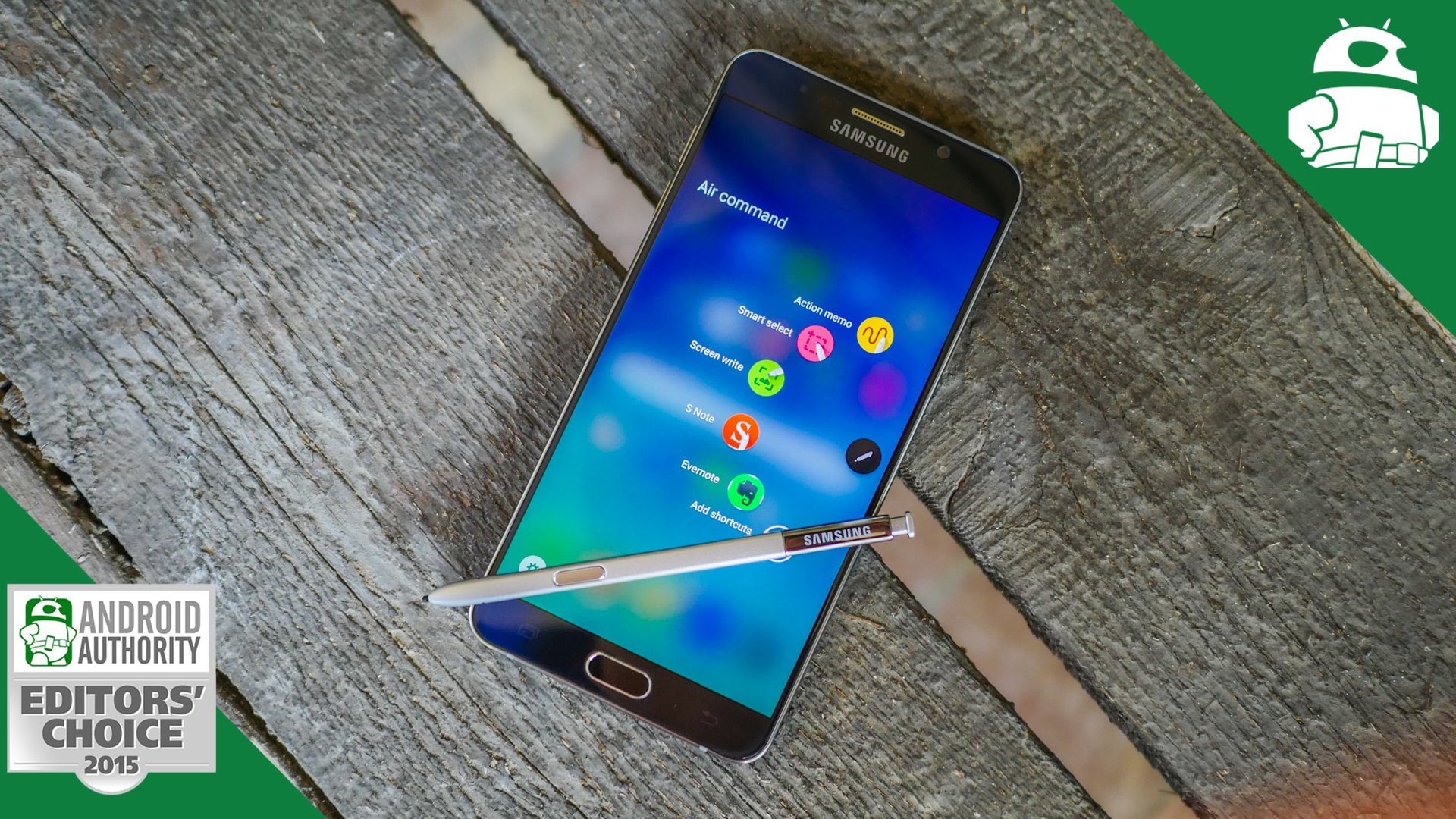
Samsung Galaxy Note 5 review
Published onSeptember 3, 2017
Samsung Galaxy Note 5
What we like
What we don't like
Our scores
Samsung Galaxy Note 5
No longer! If you'd rather check out Samsung's latest Note family member, be sure to head over to our Samsung Galaxy Note 8 review!

Original review (August 2015): Over the past few years, Samsung has followed a release cycle featuring two major flagships, under the Galaxy S and Galaxy Note monikers. Apart from the obvious difference in size, there has always been some separation in design, build quality, and features between the two series, and the mainstream acceptance of large display smartphones led to the Galaxy Note series emerging as the more compelling option in recent times.
With a new, yet controversial, design language, and some enhancements underneath the surface, does the latest addition to the Galaxy Note family continue the legacy of the series? We find out, in this comprehensive review of the Samsung Galaxy Note 5!
More Note 5 coverage:
Design
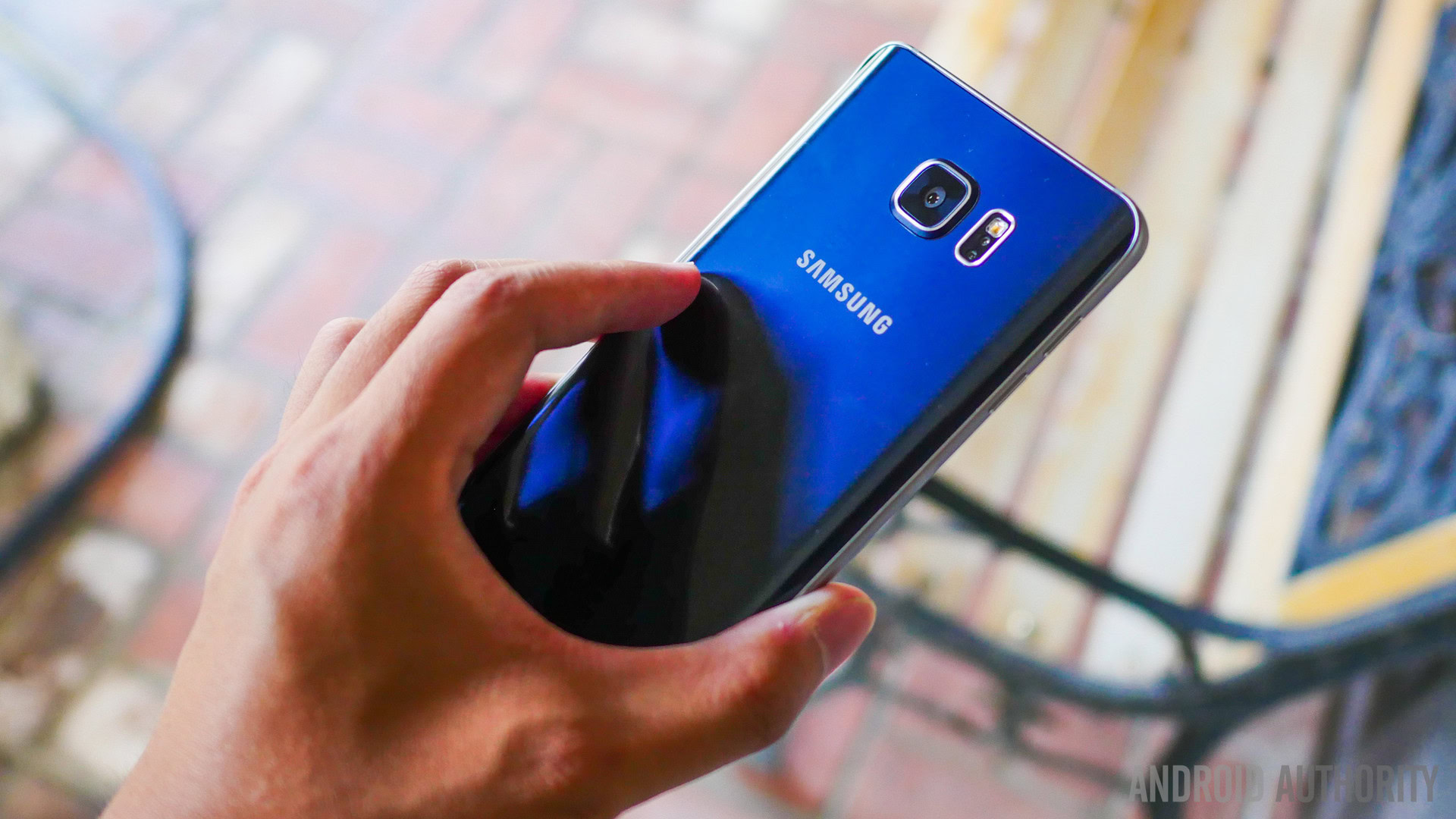
Perhaps the most important part of the new Galaxy Note 5 is that it feels like we’ve been here before, and that starts with the design. Though much of the Galaxy design language remains as familiar as ever, the just-released Galaxy Note now takes its build quality cue from the latest Galaxy S series flagship, offering a metal and glass construction. Glass panels are kept together with a metallic frame, and all color options include translucent effects that literally make the phone shine and reflect.
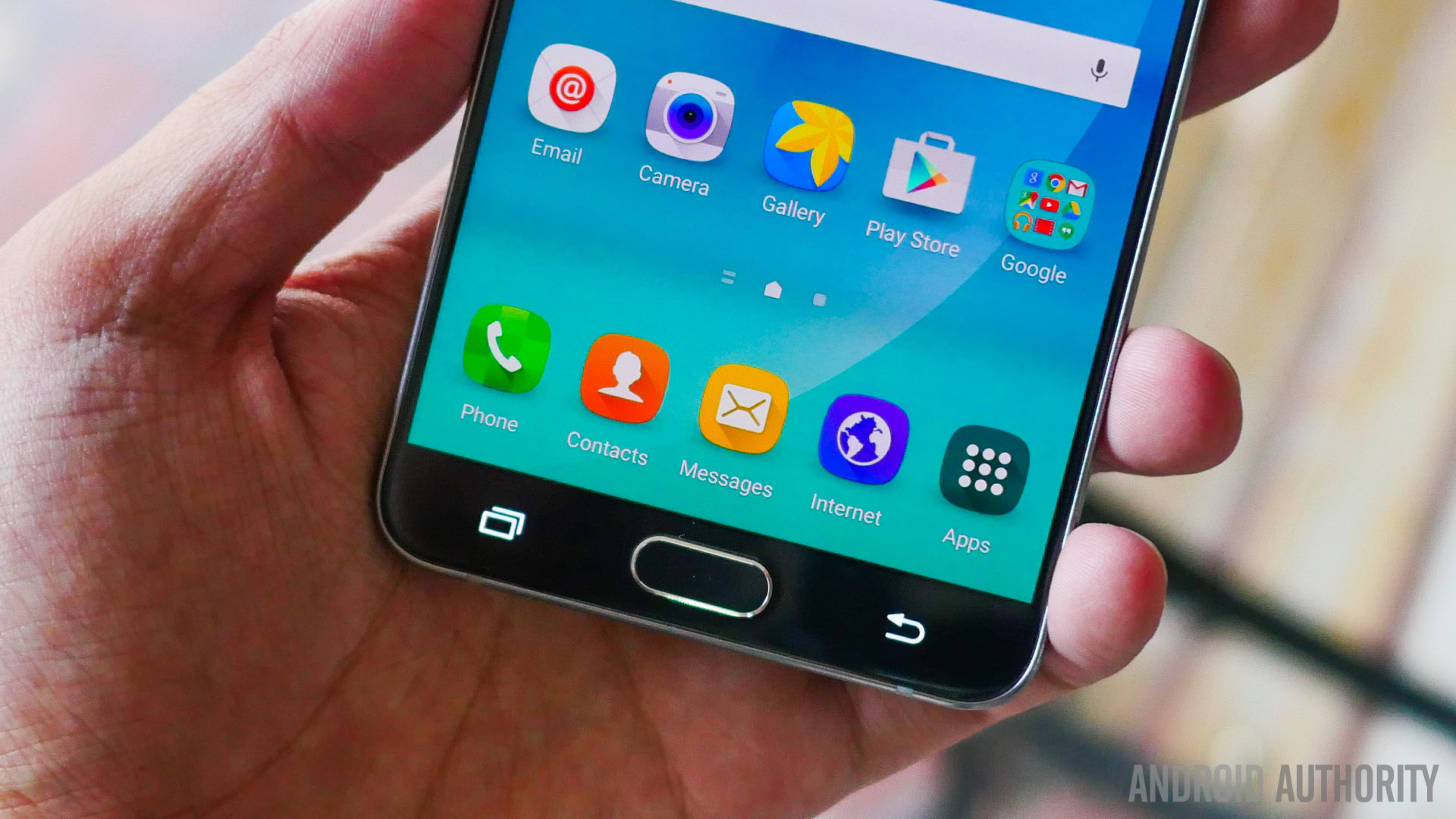
The use of glass means that the Note 5 is also the most fingerprint prone Note device we’ve seen, which is another trope that it derives from the Galaxy S6. But, unlike the Samsung Galaxy S6 Edge+, the Galaxy Note 5 manages to be just a bit more than a blown up Galaxy S6, with its subtle curves along the sides of the back, that actually help with the handling of this large phone.
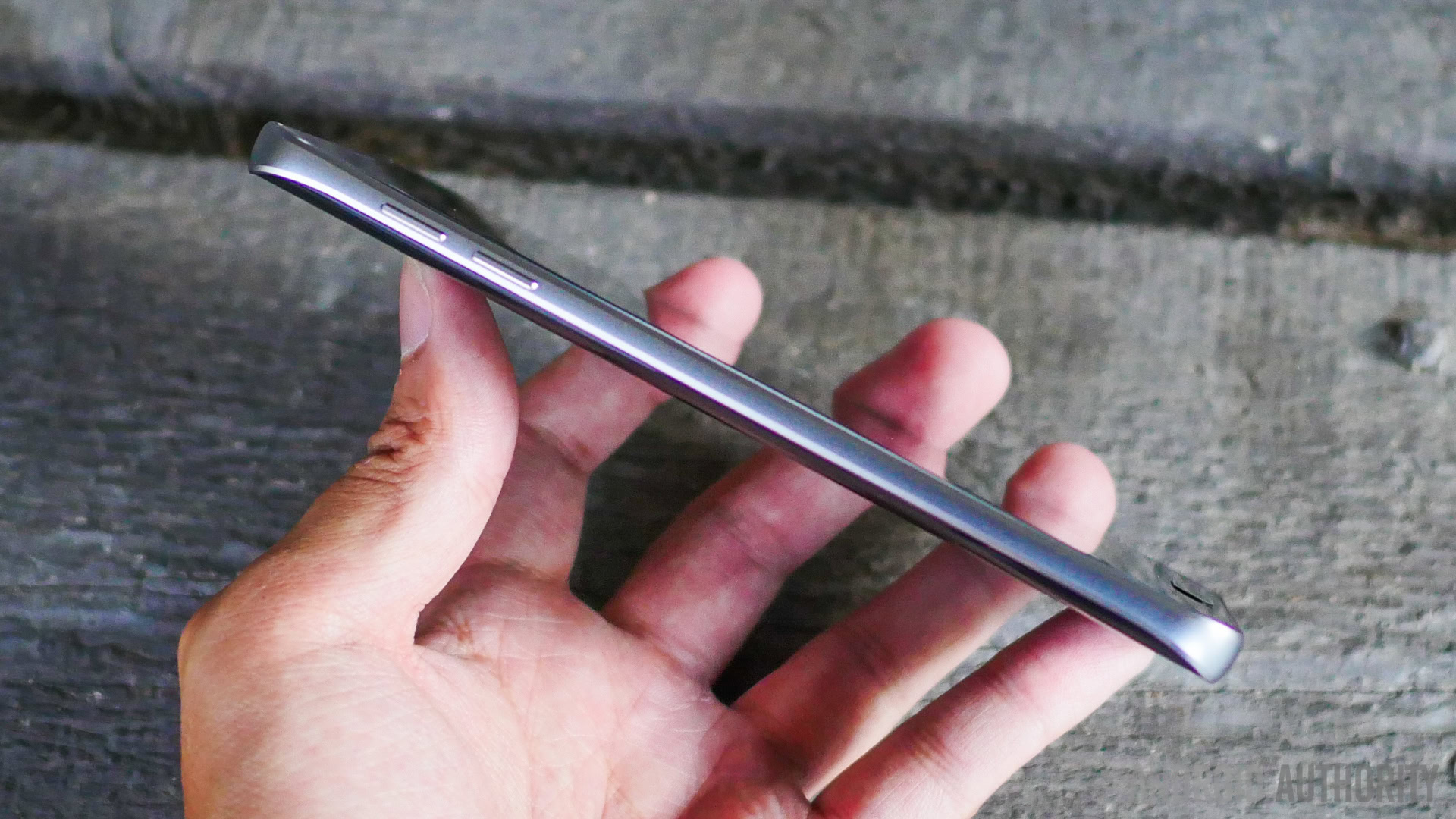
Of course, much of what we all remember from Samsung devices returns here. The buttons are all where one would expect them, with the fingerprint scanner integrated into the tactile home button up front. The scanner now works with a simple touch, which is a far better implementation than the swipe version found with its predecessor. Down at the bottom is the microUSB port, the headphone jack, the speaker grill, as well as the S-Pen, nestled very neatly into the bottom right corner.
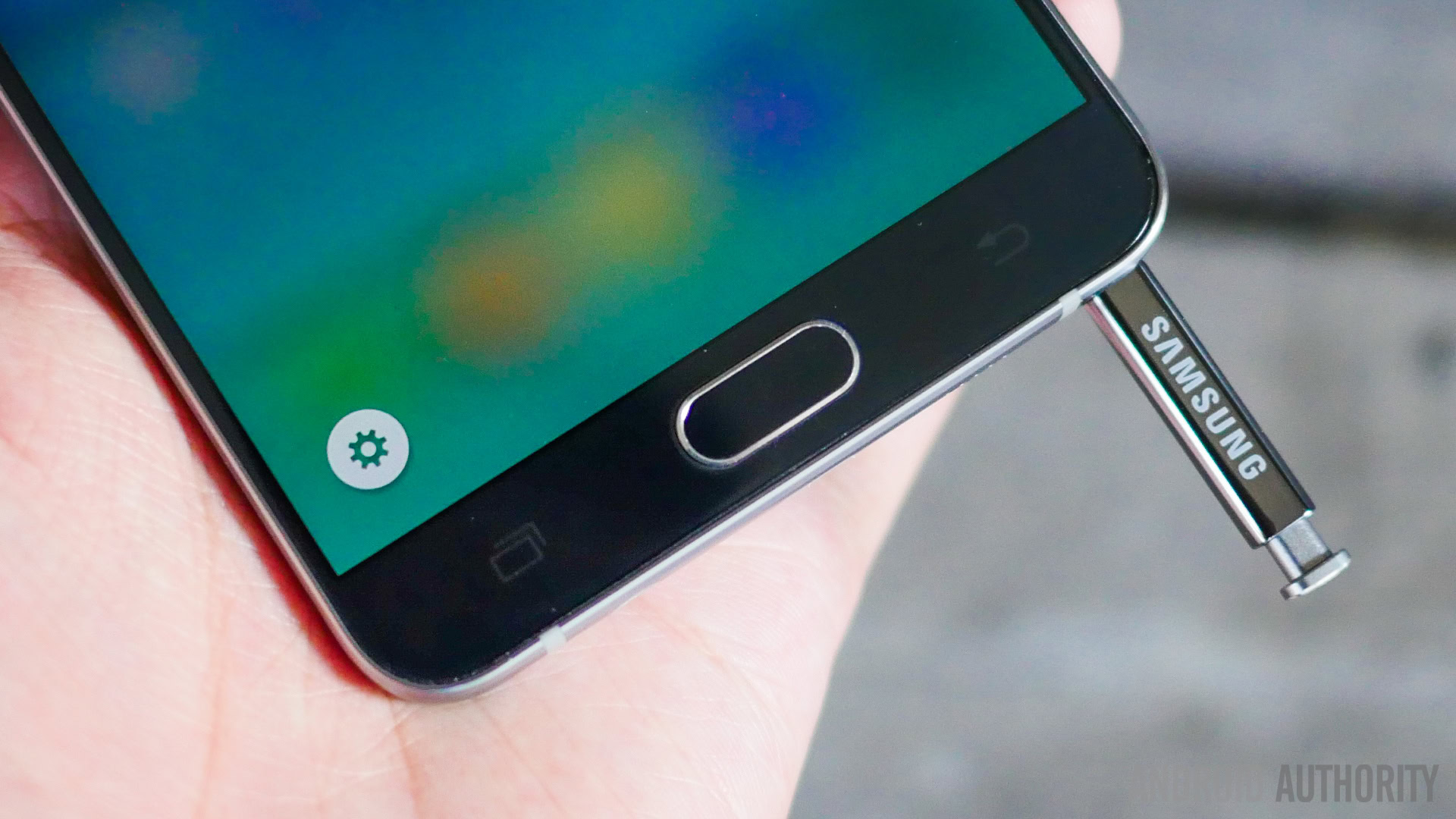
The S-Pen also gets some real updates in design, as is evident when you pop out the top, which has been done in order allow the pen to be flush with the body, making it look and feel sleeker than before. The click on the top is yet another toy to mess with, and any avid S-Pen user will probably take advantage of it as they gather their thoughts in between taking down any notes.
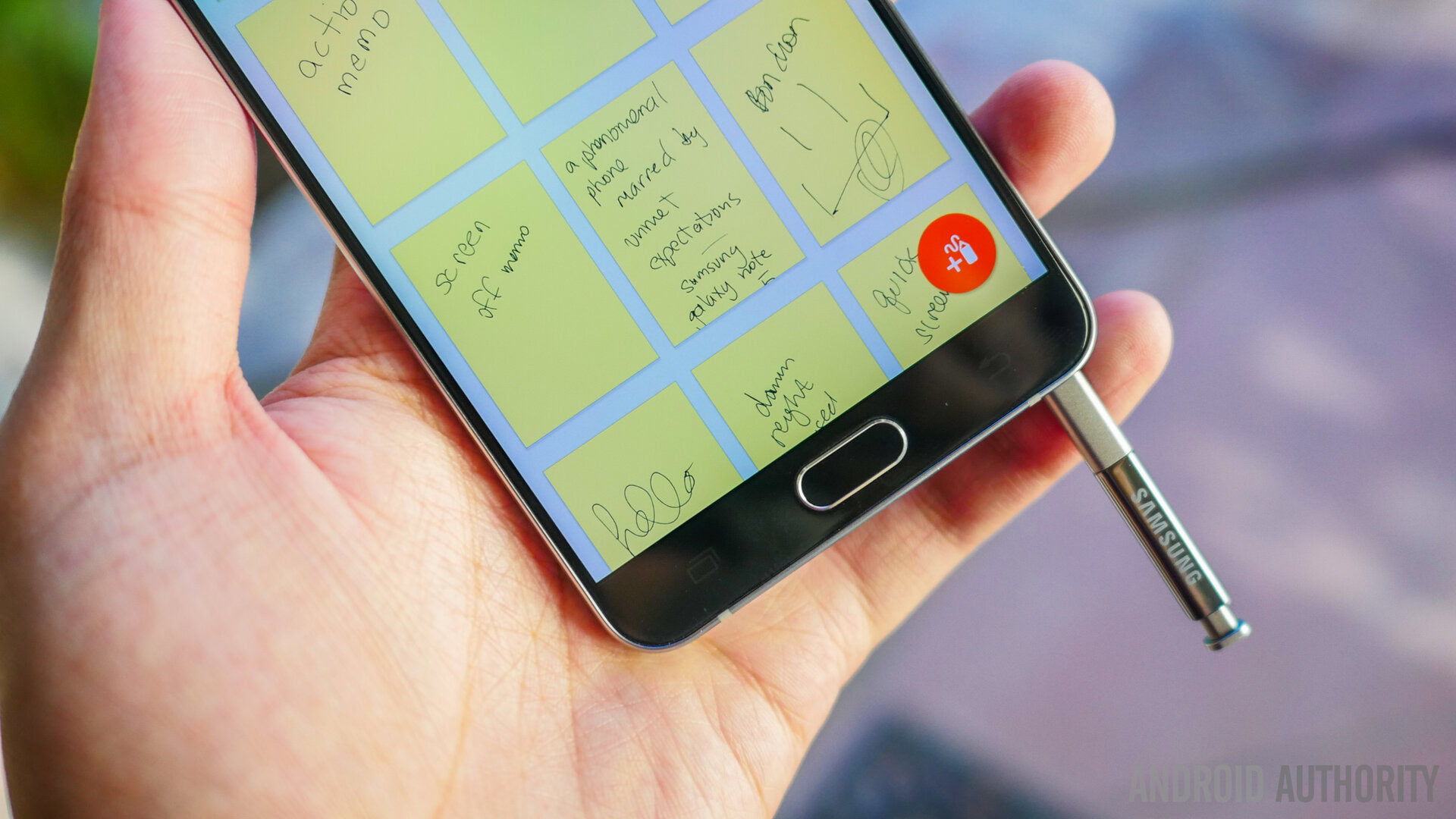
This is also a good place to address the “Pengate” controversy that has been making the rounds – while it is true that you are able to put the S-Pen into the slot backwards, that is certainly not a reason to do so. Even if the S-Pen could have fit backwards without affecting the sensor, I think all users should still be wary of how they are inserting this stylus, and the problem goes away.
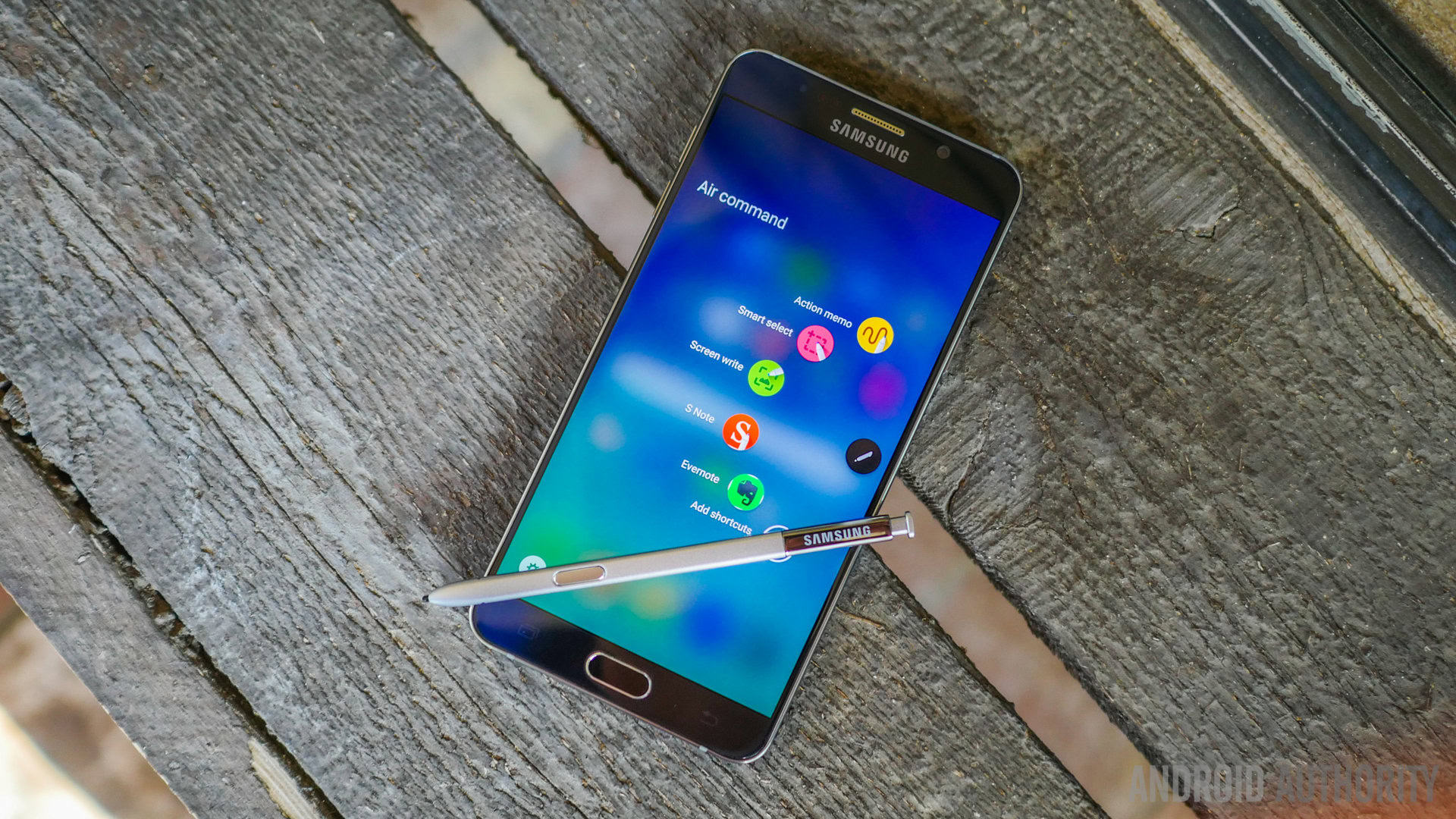
The new design language of the Note 5 brings one very significant change that is quite the point of contention, and that is the lack of a removable back cover, and all that it entails. That means no expandable storage via microSD card, and no user-replaceable battery. These were two features that previously made Galaxy Note devices the go-to phones for power users, and that is unfortunately not the case anymore. Sacrificing these two features does make for the thinnest, most beautifully constructed Galaxy Note smartphone ever though. Handling might suffer from a pretty slippery glass design (up until the fingerprints and smudges slow it down), but the Galaxy Note 5 still manages to have one of the most appealing aesthetics, even if it now feels overly familiar.
Display

The Galaxy Note 5 comes with a 5.7-inch Super AMOLED display with a 2560 x 1440 resolution, which is, on paper, identical to the display of its predecessor. However, the display has been incrementally enhanced to improve on an already fantastic viewing experience. Quad HD makes a lot of sense on a larger display, resulting in an excellent pixel density of 518 ppi, despite the large size. The high saturation Super AMOLED construction proves to be as great as ever, allowing for vibrant, vivid colors, and plenty of brightness for comfortable viewing in broad daylight. You do have the option to tone down the saturation though, if that better suits your tastes.
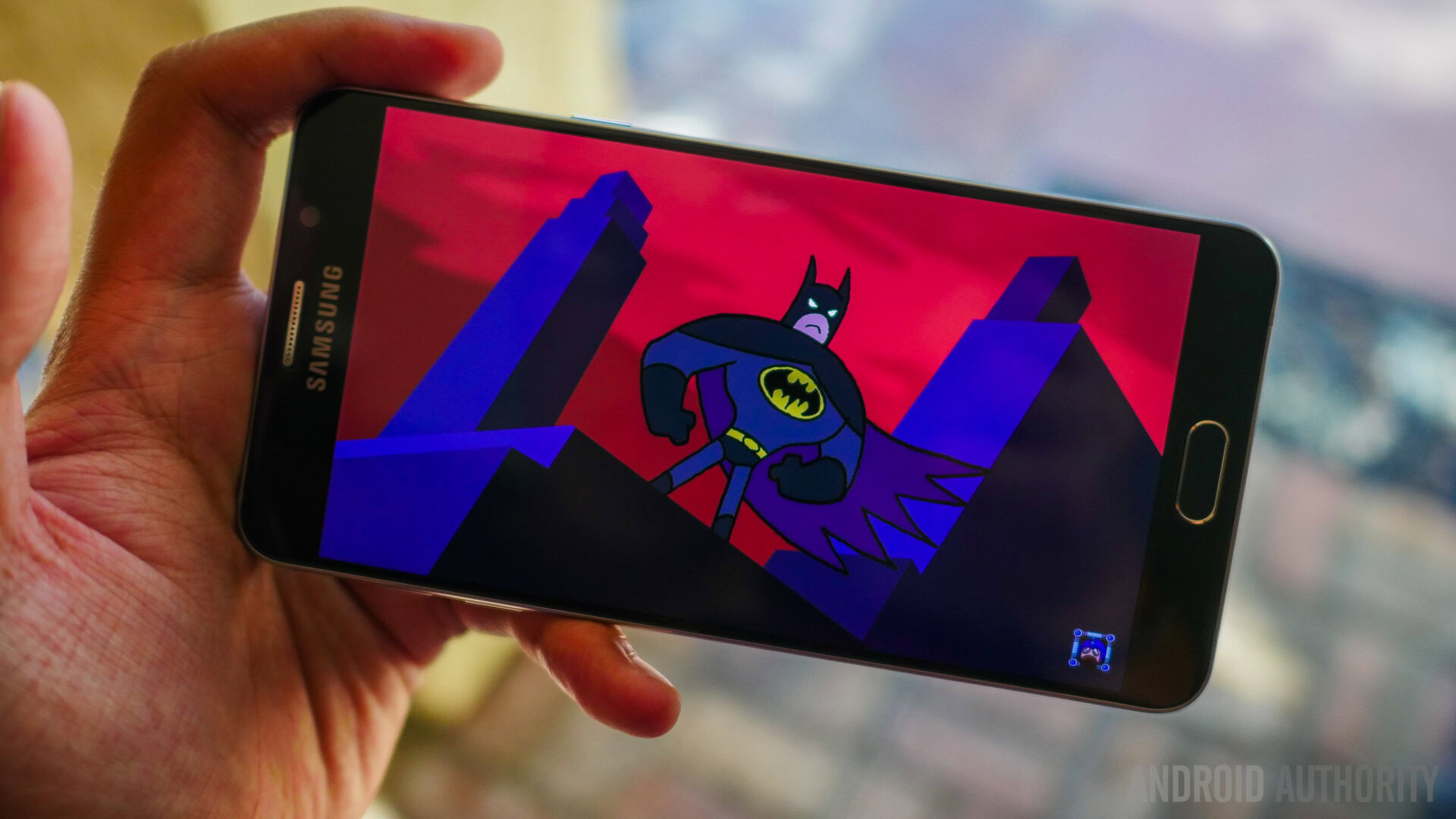
What we think is the most important about this panel, however, is the really small bezel ratio. There is very little space on the sides of the display, which helps tremendously with the handling experience. For a phone that deals with text and writing, the screen really shines, but fire up a very colorful game or video and using this display will be an absolute joy.
Performance
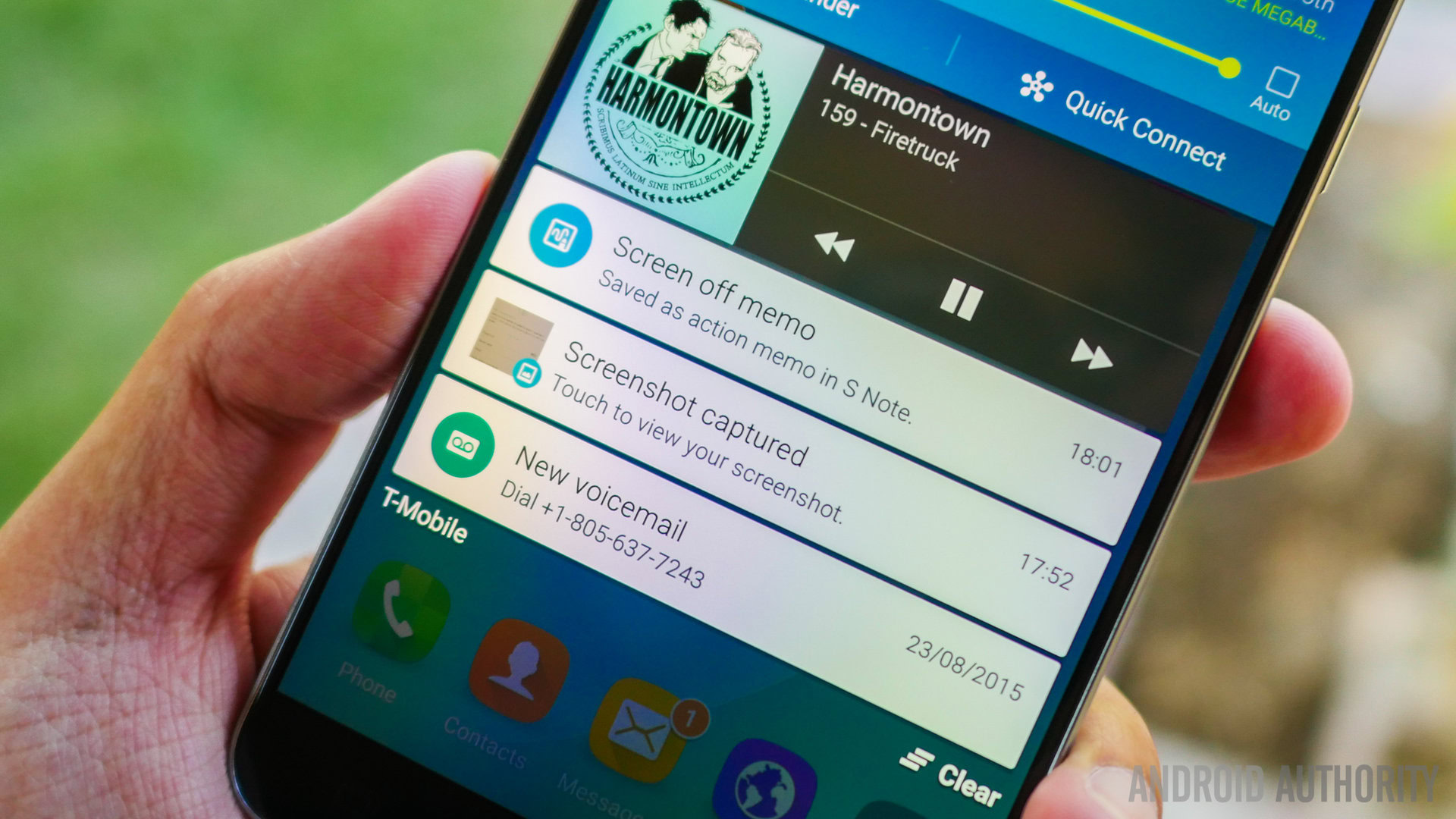
Performance is a high-point for the Galaxy Note 5, thanks to Samsung’s use of its in-house processing package, which has been optimized for the toned-down TouchWiz. The octa-core Exynos 7420 processor, clocked at 2.1 GHz, returns from the Galaxy S6, where it really shined, bringing with it an additional gigabyte of RAM, for 4 GB in total. That combination allows for some strong multi-tasking, and that’s great, given the availability of the S-Pen and all of its features.
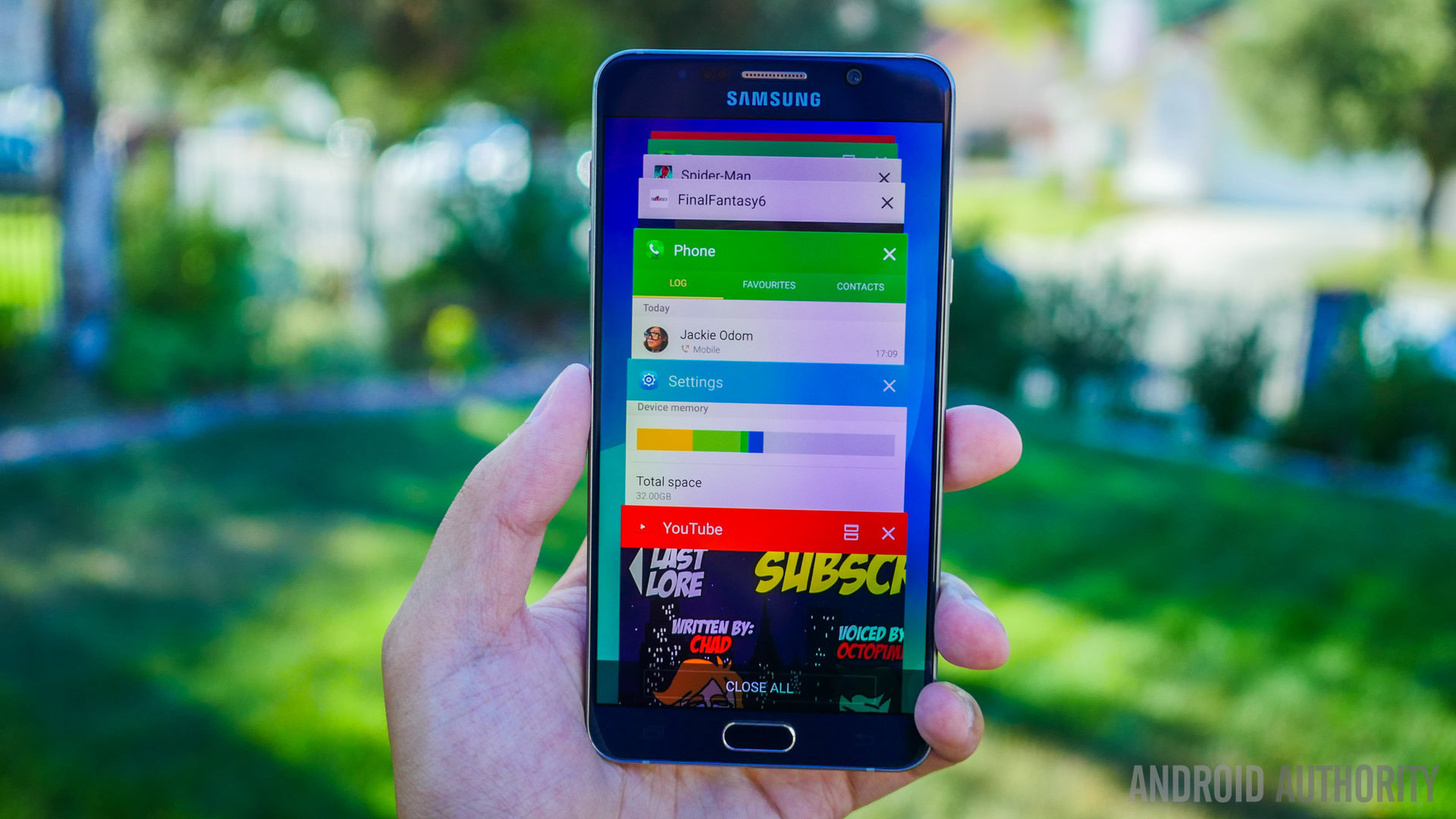
There is no doubt in our minds that this processing package is a great performer, as a whole week of above-average use has yet to slow down this phone, on which we’ve installed apps, used trackers, watched videos, played games, and taken lots of pictures and videos with. The Galaxy Note 5 succeeds where the Note line has always excelled – being the fastest and best iteration of the Galaxy experience in any given year.
Hardware
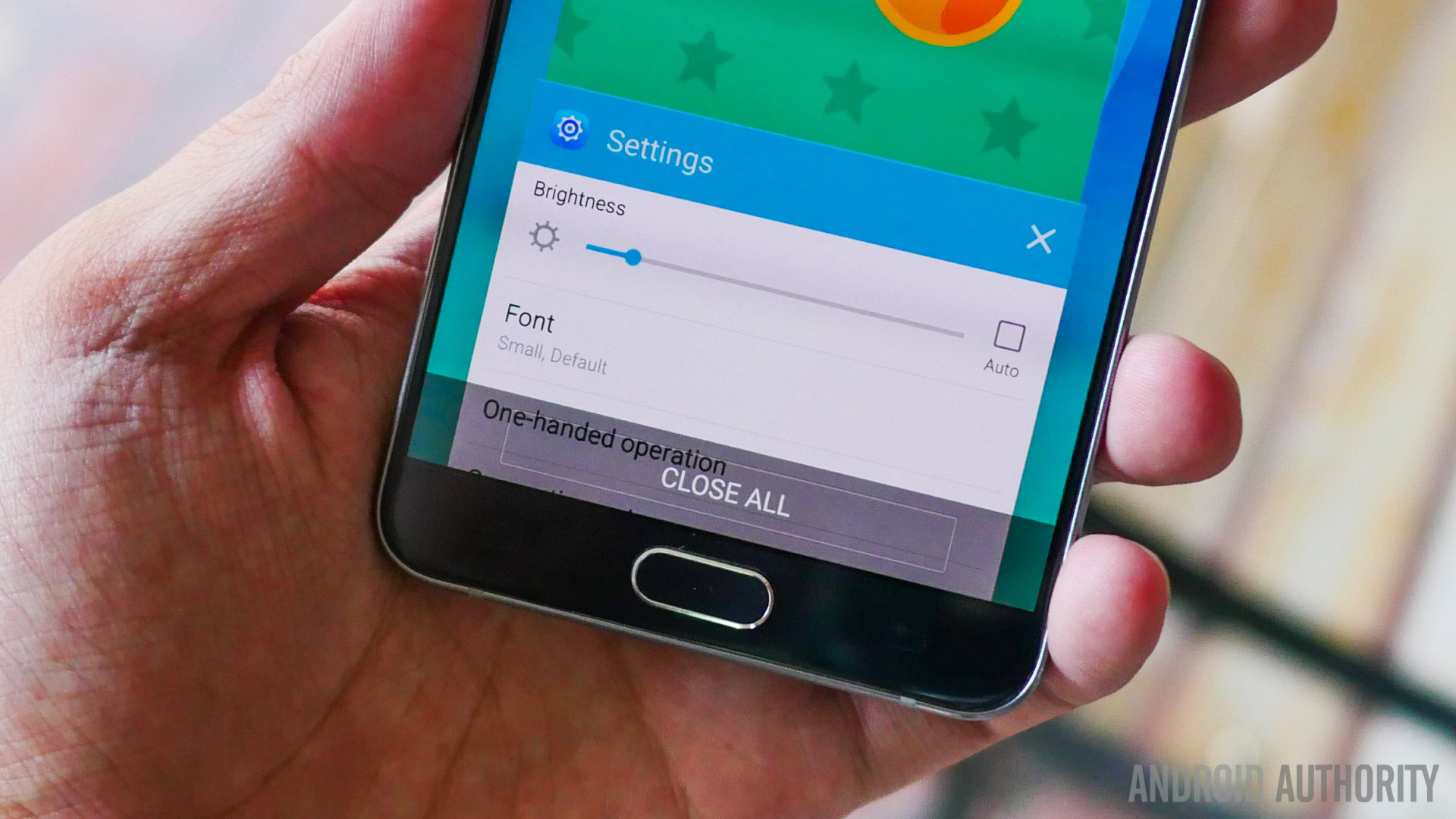
In hardware, some familiar additions return with the Galaxy Note 5. On the back of the phone, right next to the camera package is where the heart rate monitor can be found. It works about as well as ever, thanks to a streamlined S-Health app, but this is not a feature you will probably use very often.
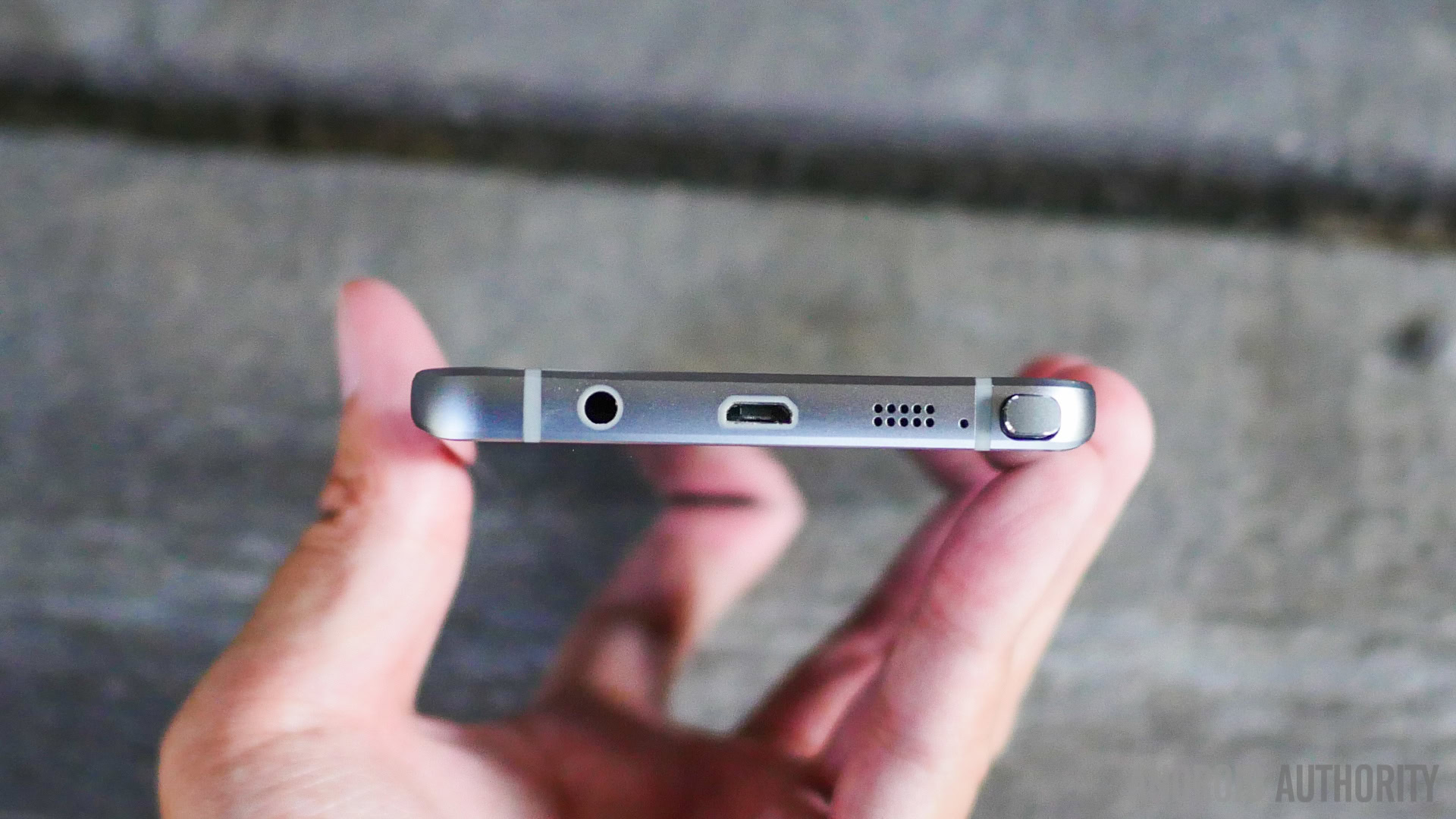
The device packs a standard suite of connectivity options, including NFC, which will be a part of the upcoming Samsung Pay ecosystem. Phone calls come in loud and clear, and I had no dropped calls during my usage with the T-Mobile network. Speaking of audio, the single speaker unit on the bottom benefits from a better placement from before, but provides the expected quality. It gets pretty loud, but without much body in the sound, but we’re glad it doesn’t overdo the high ends though.
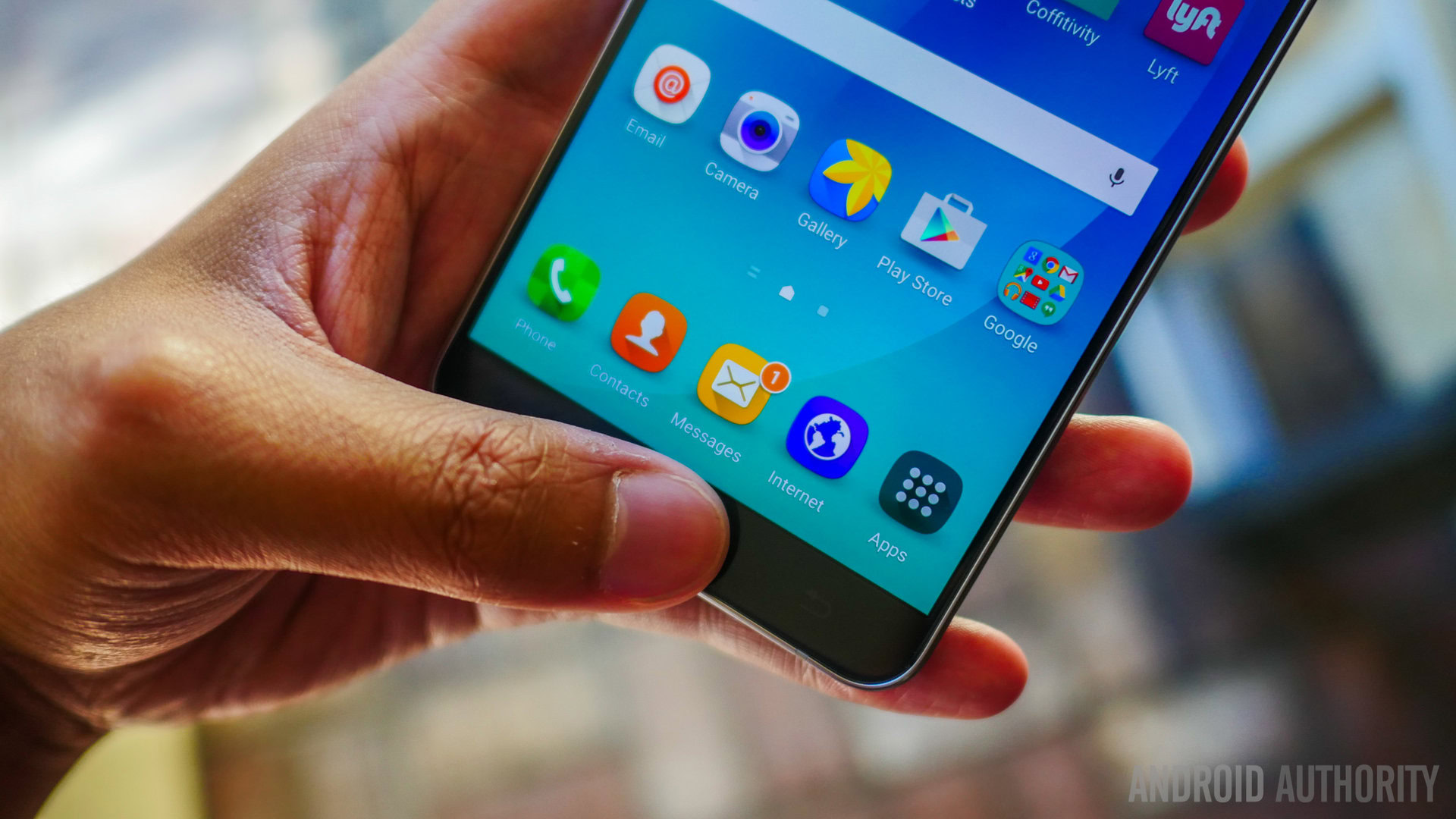
Fingerprint reading is a thing of the future, and Samsung makes it work quite well in the Galaxy Note 5. Setting it up for Web sign-in credentials is possible, but, for the most part, the primary use of the fingerprint scanner will be to unlock the phone. The scanner’s usefulness will also see a bump when Samsung Pay officially launches later this year.
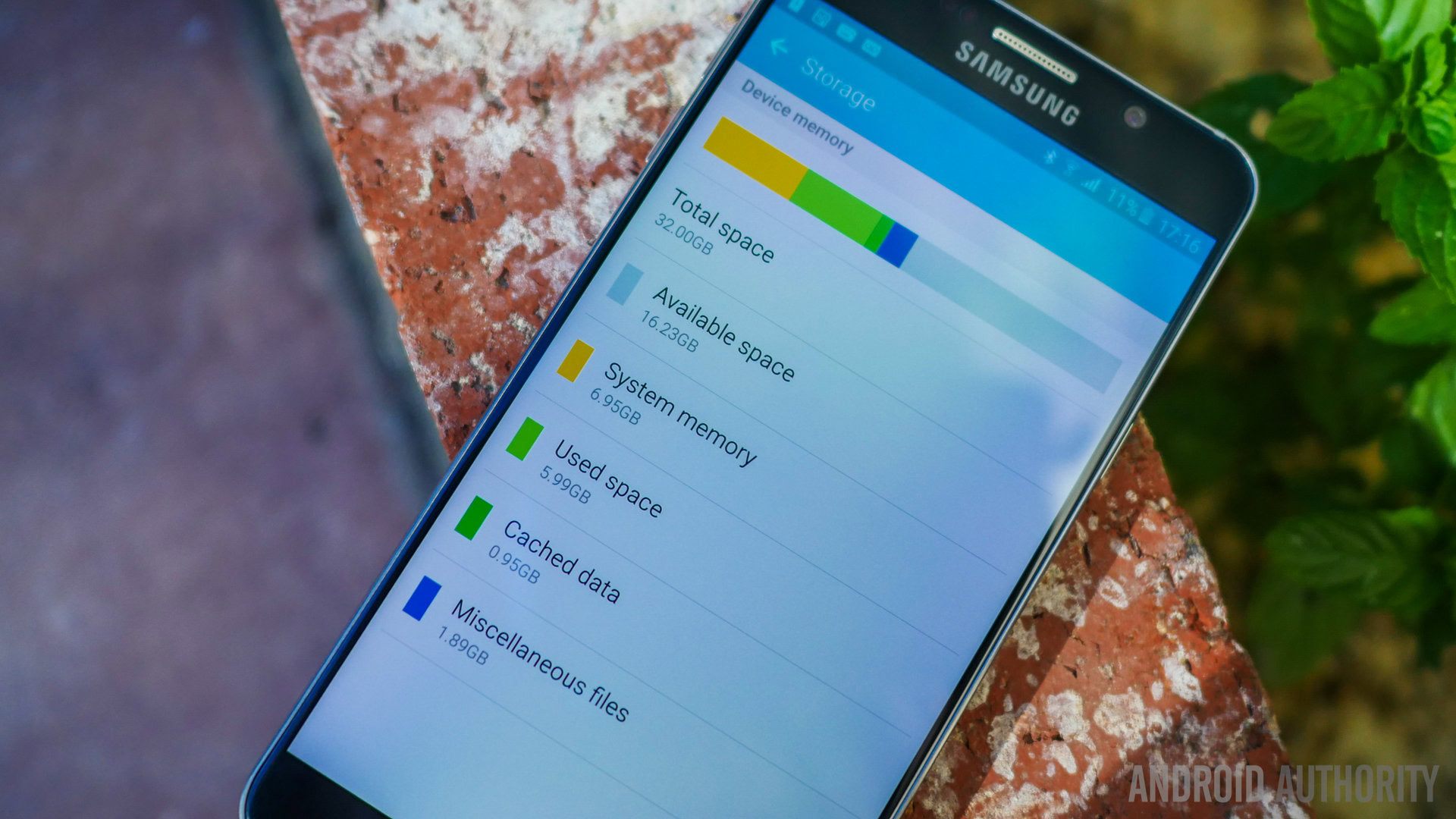
On the storage front, the Galaxy Note 5 comes with 32 GB or 64 GB options, without the possibility to expand the storage, leaving power users dependent on choosing the larger version, along the premium it entails. As was the case with the Galaxy S flagships, the storage in the Galaxy Note 5 is UFS 2.0, which is a standard that can rival speeds of SSDs, and that helps with maximizing speed. That, of course, might not be reason enough to warrant the removal of expandable storage, but the smooth performance of the device can definitely be attributed to optimized internals, over a myriad of unknowns coming from microSD cards. A lot of people won’t be convinced, but it’s something we thought should be considered.
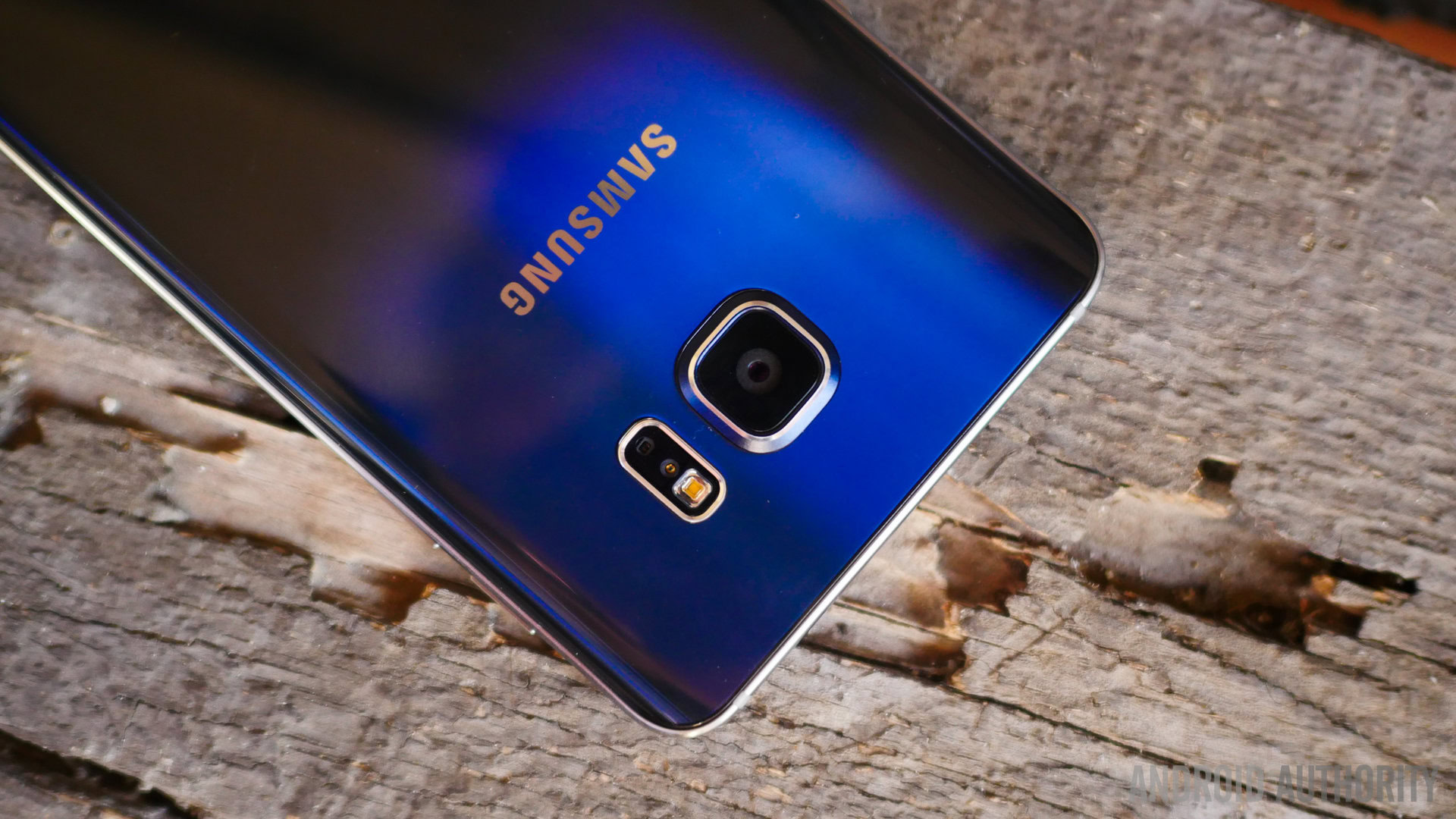
Finally, when it comes to the battery, the Galaxy Note 5 packs a 3,000 mAh unit, and that capacity does seem a little bit small at first glance. In our testing, we found that the device could still handle a full day of work without any problems, though getting anything more than that is a stretch. Screen-on time never really got beyond 4.5 hours, but with an impressive standby time, if the device remains unused a lot, it might by easy to get more than a full day out of it.
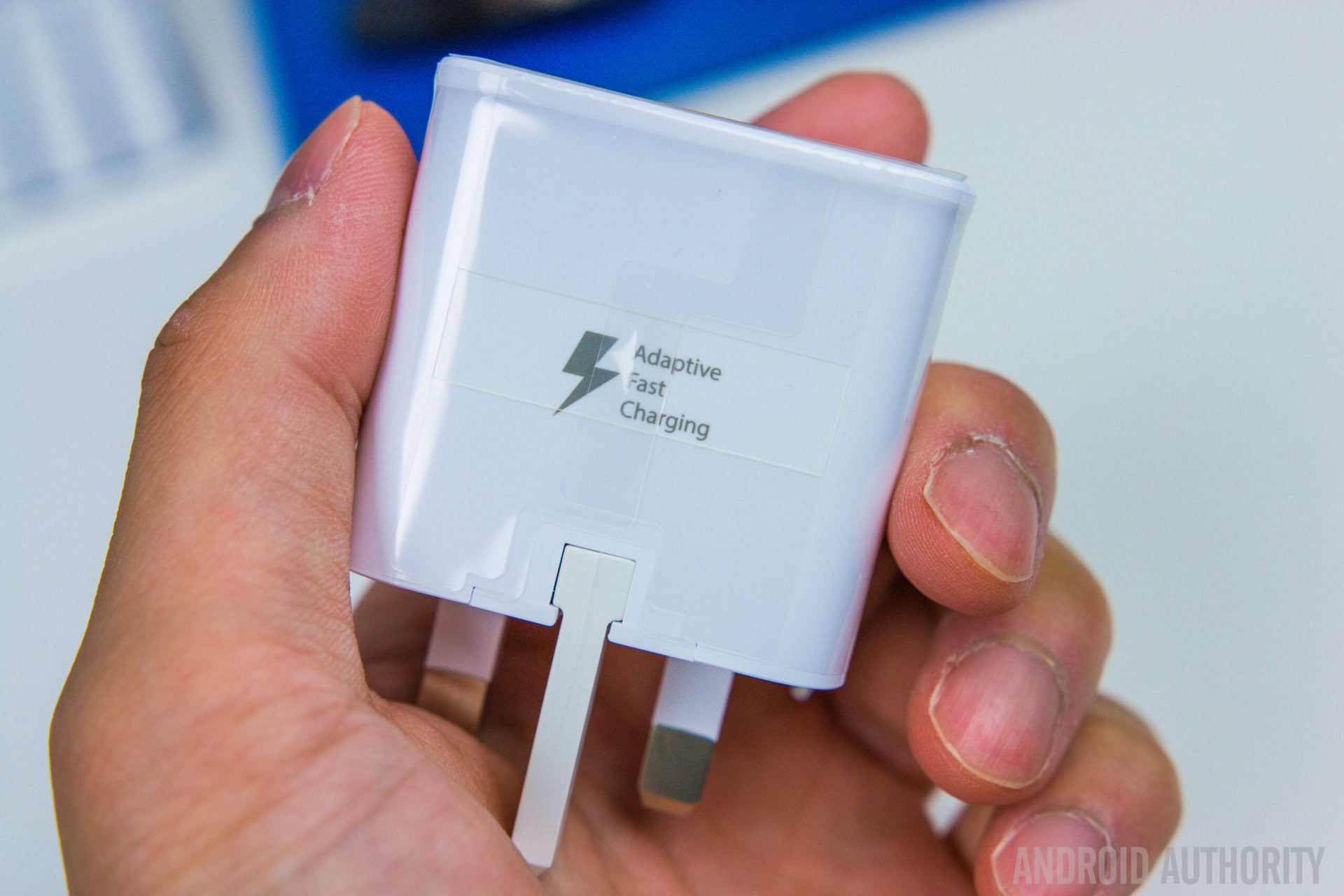
In attempting to keep the latest Galaxy Note phone as thin as possible, Samsung hit a hard limit on the battery size of the Note 5, and focused on charging it as fast as possible instead. For example, the Note 5 boasts faster wireless charging, although the high speeds are only available with Samsung’s own wireless charger. It is also nice that the device supports both the PMA and Qi wireless charging standards out of the box, but the cordless life that Samsung seemed very excited about at the launch event still feels a little far off.
The Note 5’s fast charging capabilities will prove more useful for most users, as the device requires only 10 to 15 minutes to get back to decent battery life, and only about an hour to be fully charged. Granted, fast charging does feel like a consolation prize for losing true longevity. But it shouldn’t be difficult to find 15-minute charging windows throughout the day, so that you aren’t worried about running out of juice.
Camera
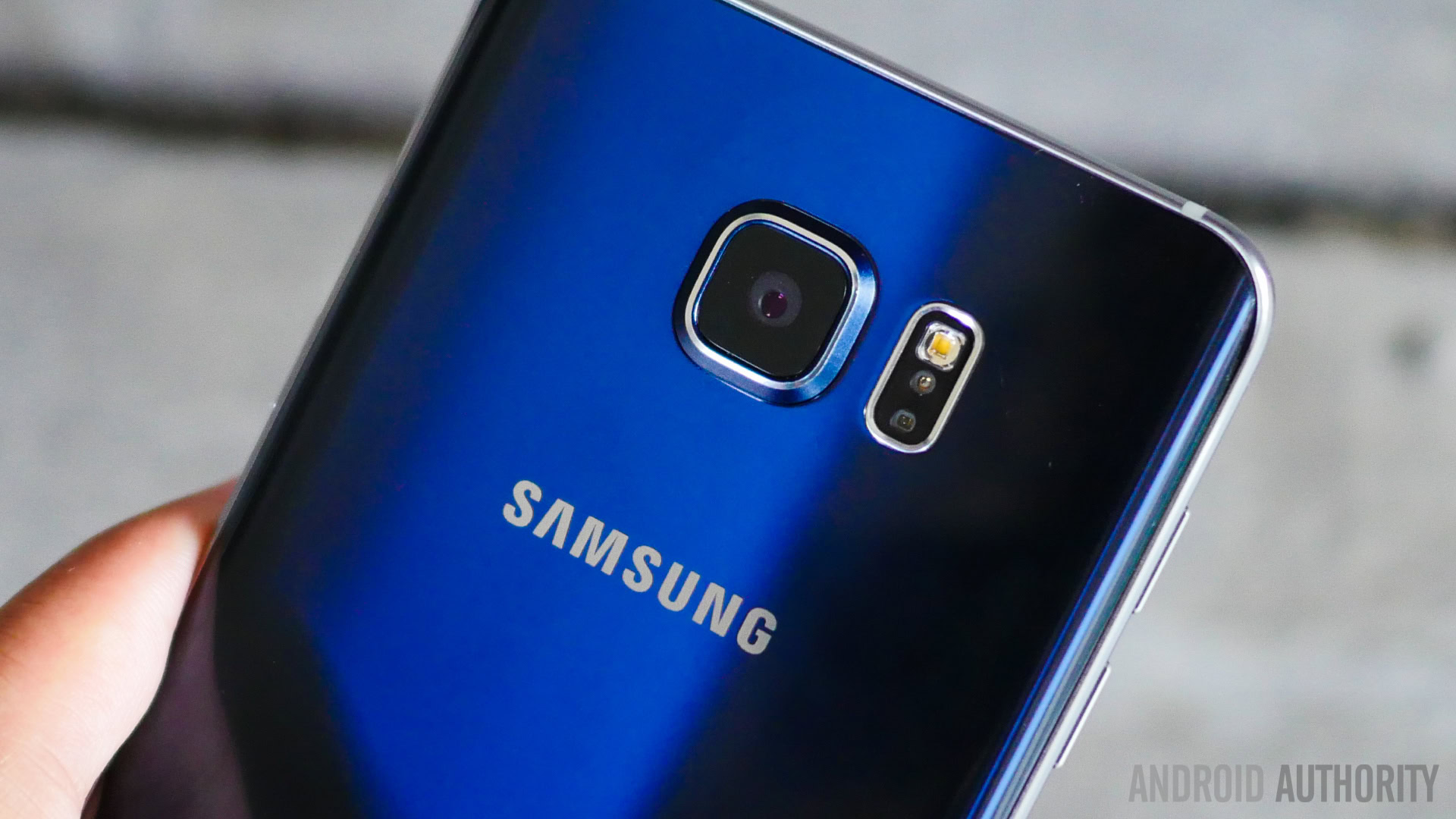
The Note 5 retains the quality in the camera department, quite literally in this case: the camera on the device is basically the same with the Galaxy S6′, with its 16 MP rear shooter with a f/1.9 aperture and 4K video recording capabilities, along with a 5 MP wide angle lens front-facing camera.
By far, the best part about the camera experience is the ability to bring it up by simply hitting the home button twice, which will quickly and easily launch the camera app. The manual controls of the mostly familiar app have been given a few more options, such as being able to change the Kelvin reading in the white balance slider, which isn’t available with the Galaxy S6 camera.
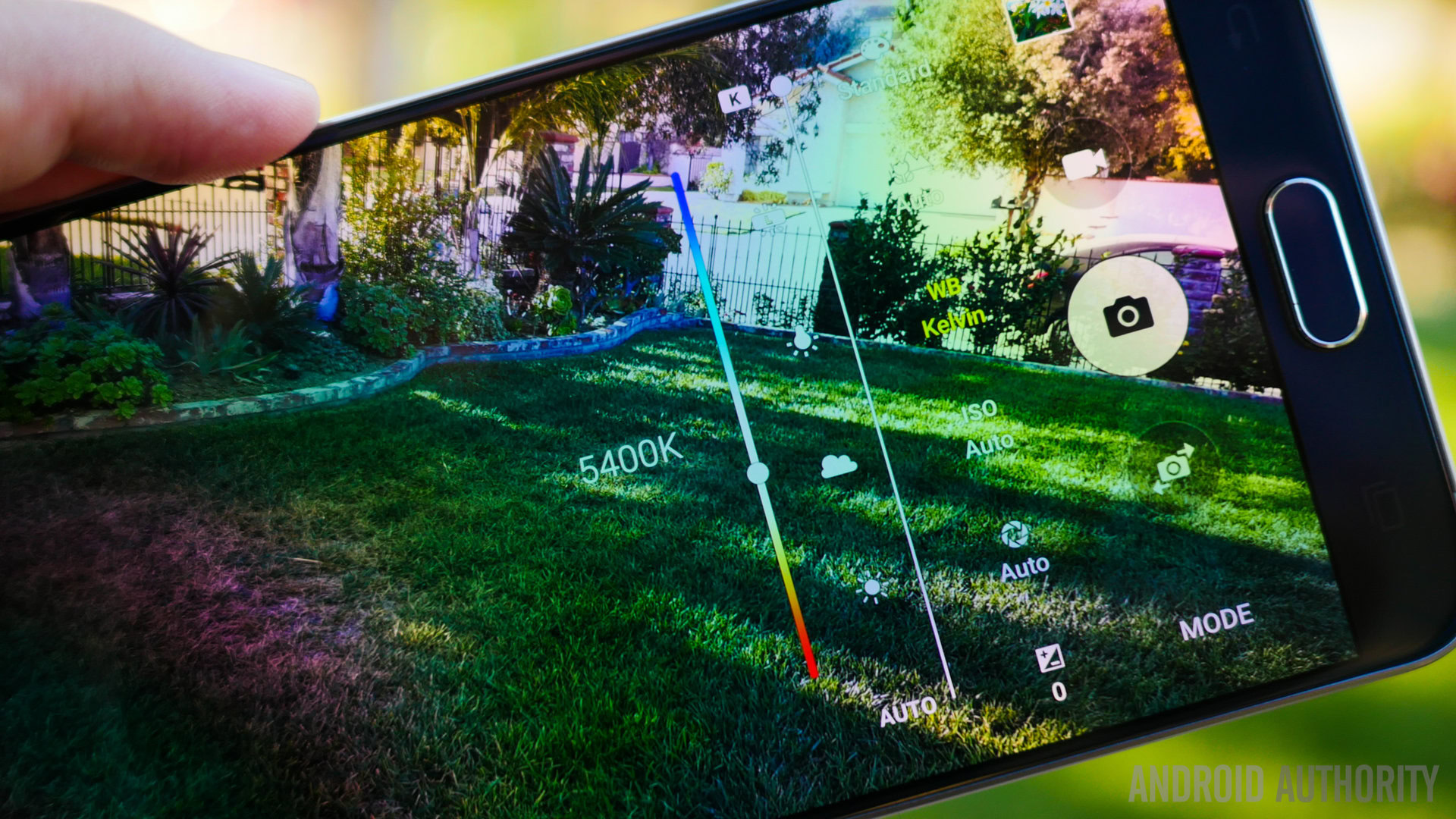
There are all the usual modes as well, with everything from slow motion, to a new video collage mode that is fun to use. Live broadcasting is also now available, with YouTube as the platform, which is basically a Periscope built into the app. We think it isn’t something most users will use, and even then, more established streaming services like Snapchat or Periscope might still take priority. Shooting in the app is nice and quick in most situations, and though there is some spot metering when tapping to focus, a slider for changing the exposure does appear if you need it.
Picture quality remains as great as ever, keeping Samsung at the top of the heap in the Android world. Good saturation across the board keeps pictures from ever being dull, and detail is also captured really well. Users can benefit from the f/1.9 aperture for depth of field effects, and it does help a bit in low light situations. Of course, pictures do get the expected level of noise due to higher ISO compensation, and the app gets a little slow when trying to focus in low light conditions. Much like the Galaxy S6 proved earlier this year, the great camera experience of the Galaxy Note 4 can be improved upon, and thus, the Galaxy Note 5 gets all the benefits of this past year’s evolution in camera quality and performance.
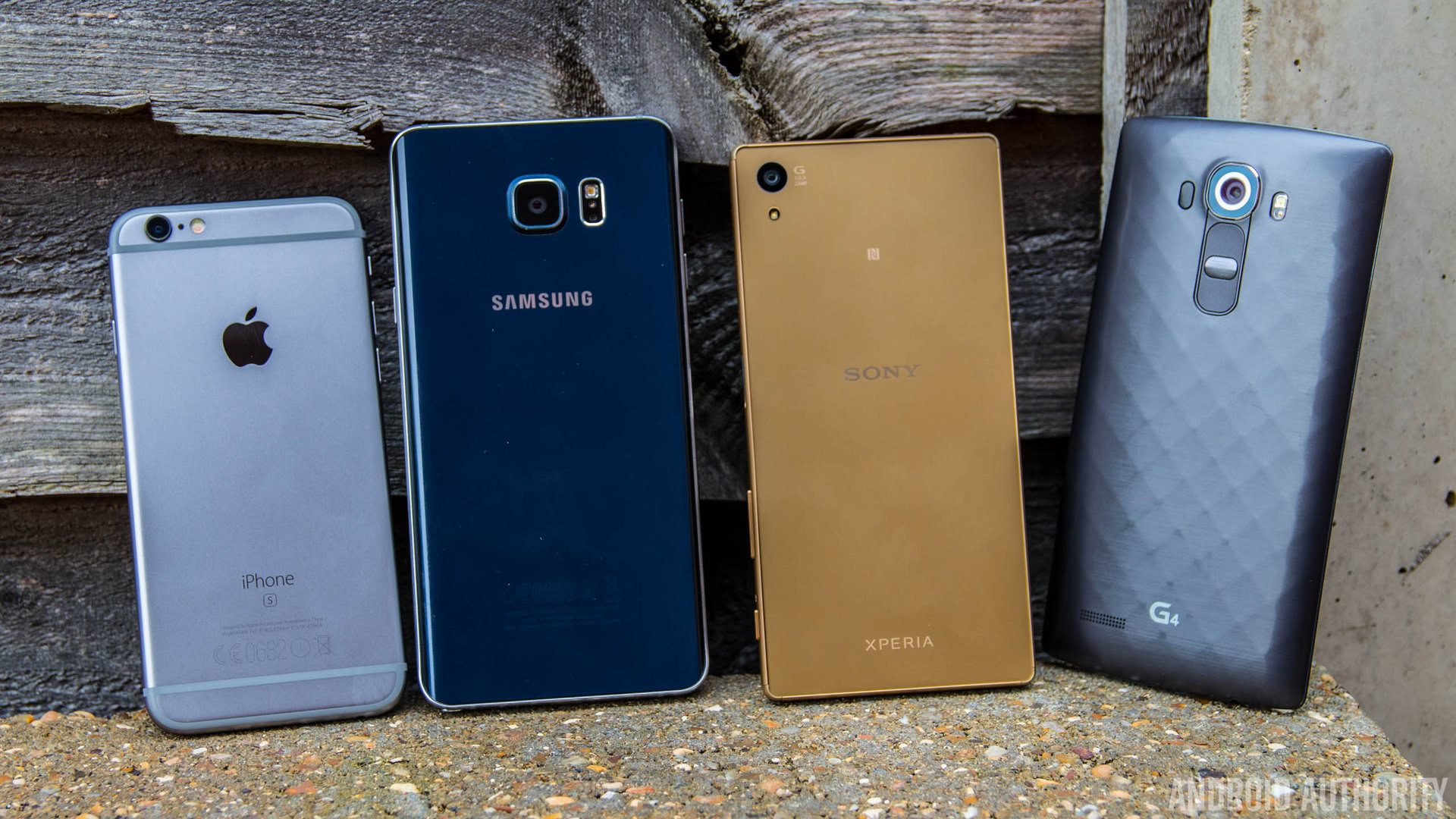
Software
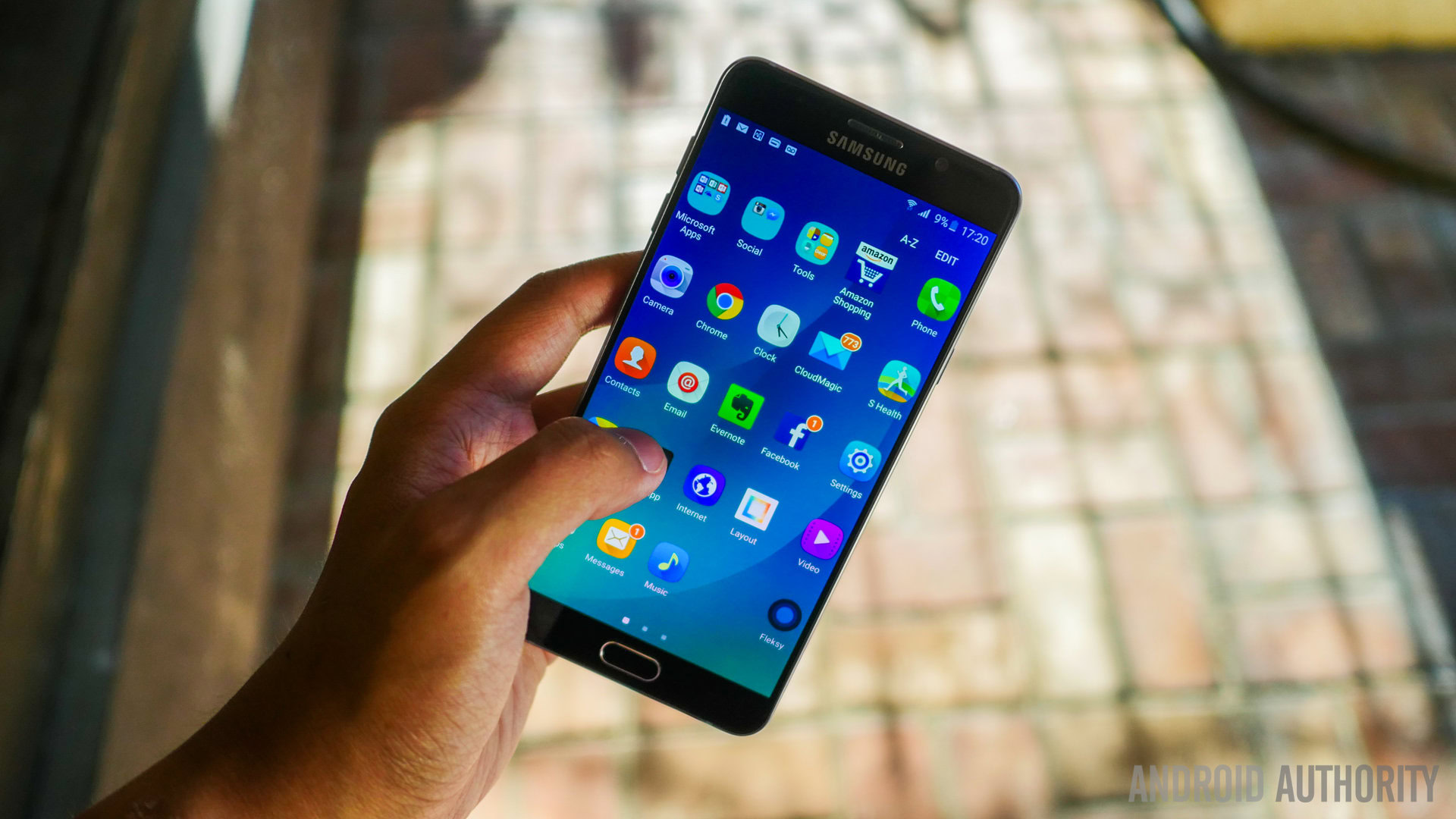
On the software side of things, the main story is in how streamlined this version of Android has become, as much of what bogged down Samsung’s operating system has been stripped away. What remains is actually quite useful: namely, certain gestures and a theme engine that does well to change the look of the interface. Plenty of features can be found with just a little bit of digging, like easy access to Multi-window from the Recent Apps screen, as well as the one-handed features, easily triggered by hitting the home button three times. Just like with the Galaxy S6, there are far less tutorials and annoying reminders of what the phone can do, which is probably one of the highlights of this version of TouchWiz.
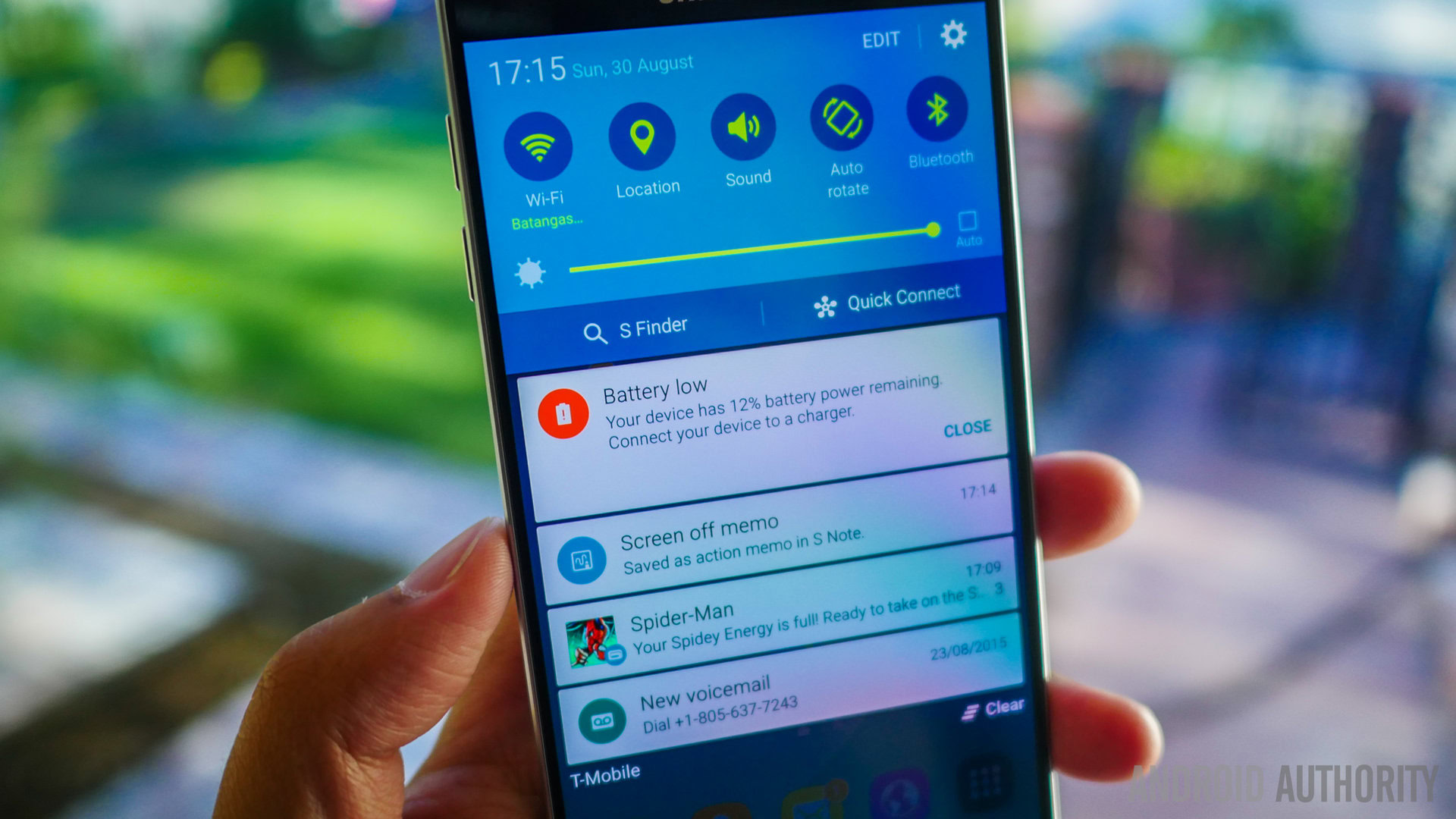
Of course, the additions mostly relate to the S-Pen, which has been streamlined with the rest of TouchWiz. Some features from before have been removed, instead prioritizing the most used abilities of the S-Pen, such as Smart Select, Screen Write, and memo creation. You can also use the S-Pen like a mouse, which is best demonstrated in places like the Gallery or while scrolling through text, where holding down and then dragging to select is nice and easy.
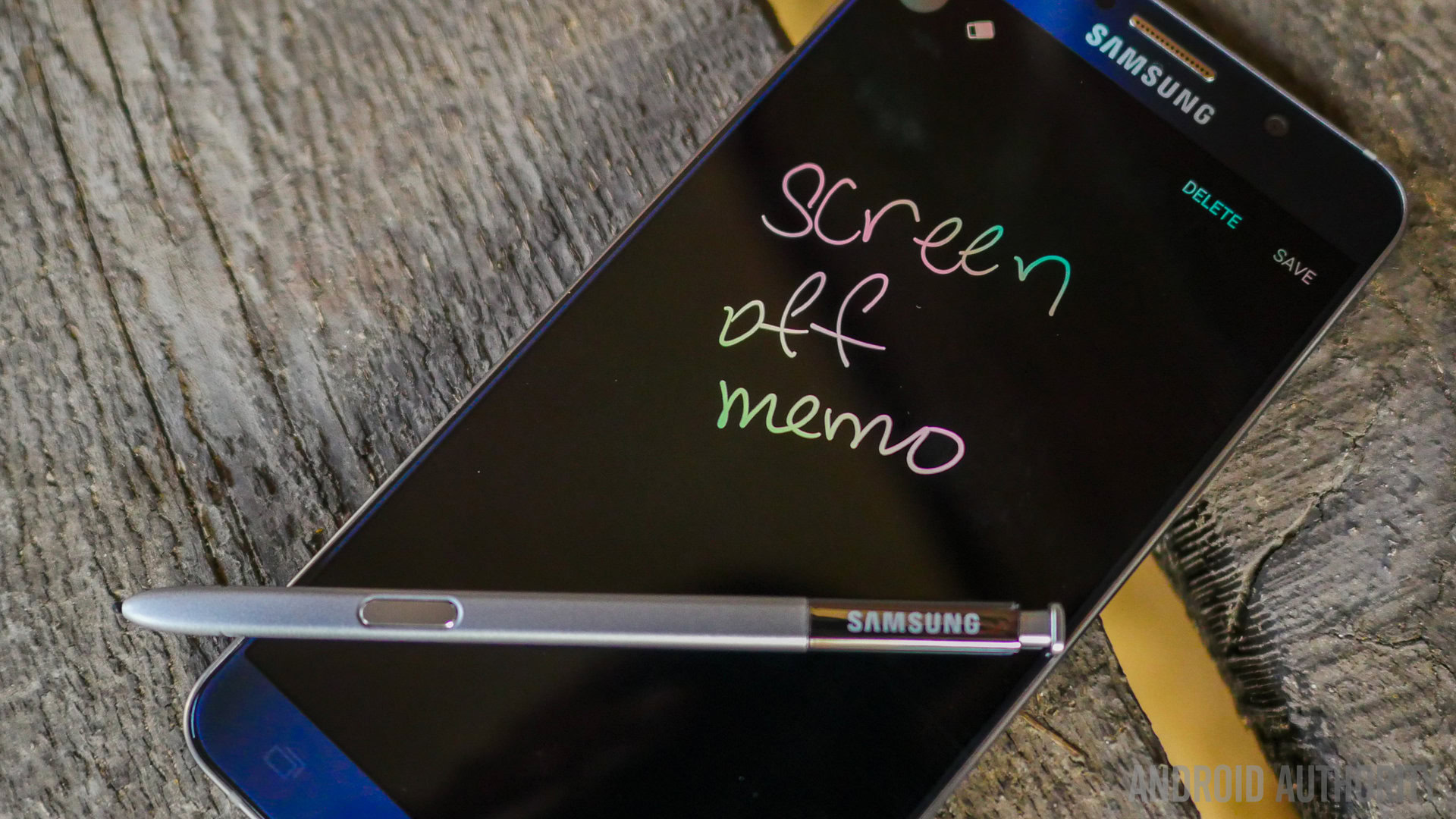
Creating memos is easier than ever on the Galaxy Note 5, as removing the S-Pen when the phone is in standby no longer wakes it, but instead, the display remains black, and a screen-off memo pad opens up. For any time when the user needs to quickly jot down any information, the Galaxy Note 5 is as accessible as a pad of paper, and even if this feature isn’t used all the time, its addition is certainly appreciated.
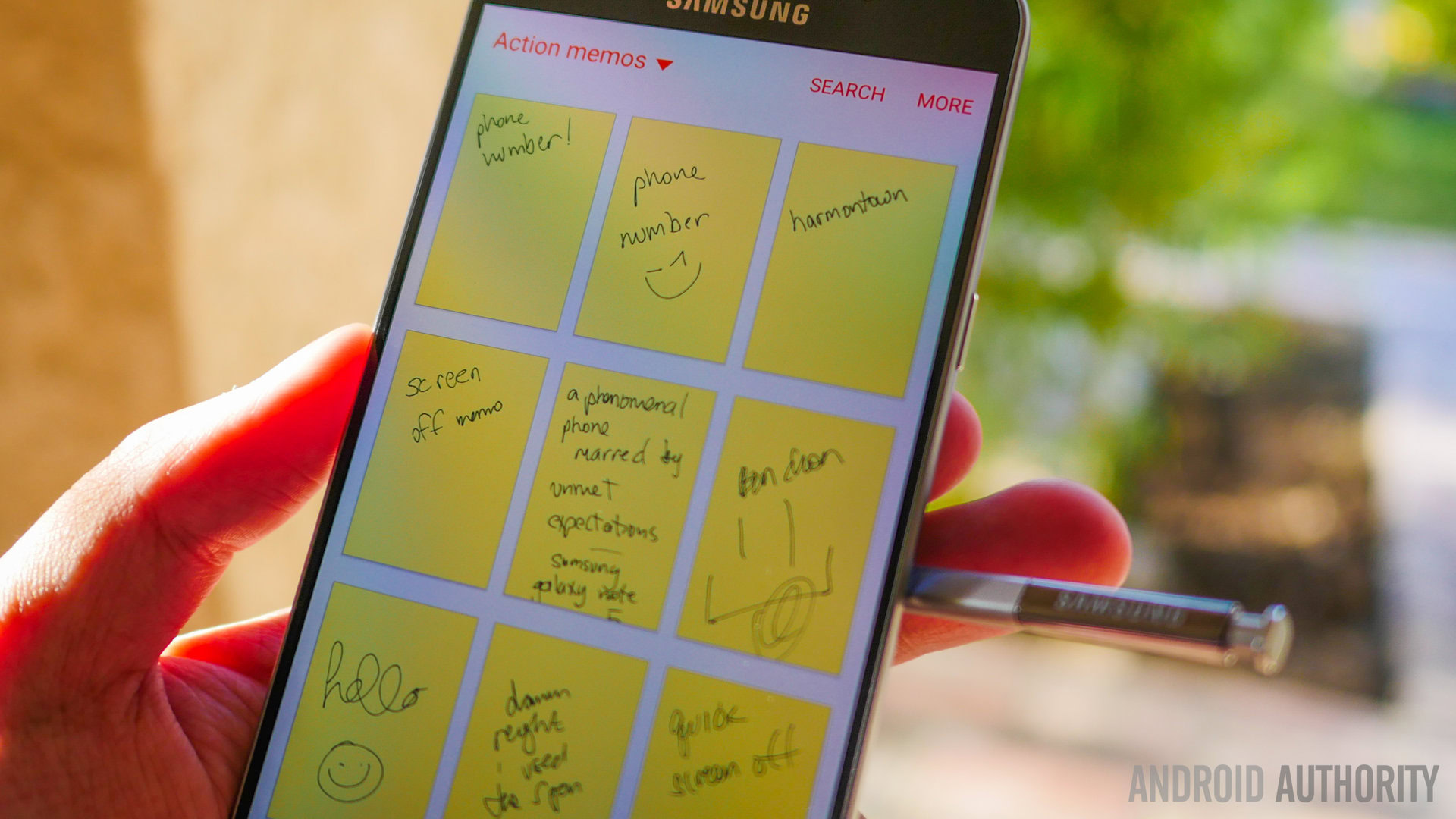
Taking the S-Pen out in any other situation, or pressing the button on it, opens up the refreshed Air Command menu, which now also includes a few shortcuts to user-defined applications, though it does feel weird to put anything on this list that doesn’t ultimately take advantage of the stylus. The Action Memo is still able to read handwriting and insert it into a number of different applications, though the feature mainly remains a way of quickly adding to S-Note. In S-Note, every note can be easily pinned to the homescreen, as well as turned into a reminder; both of these features are practical and make the Screen-Off Memo that much more appealing to use regularly.
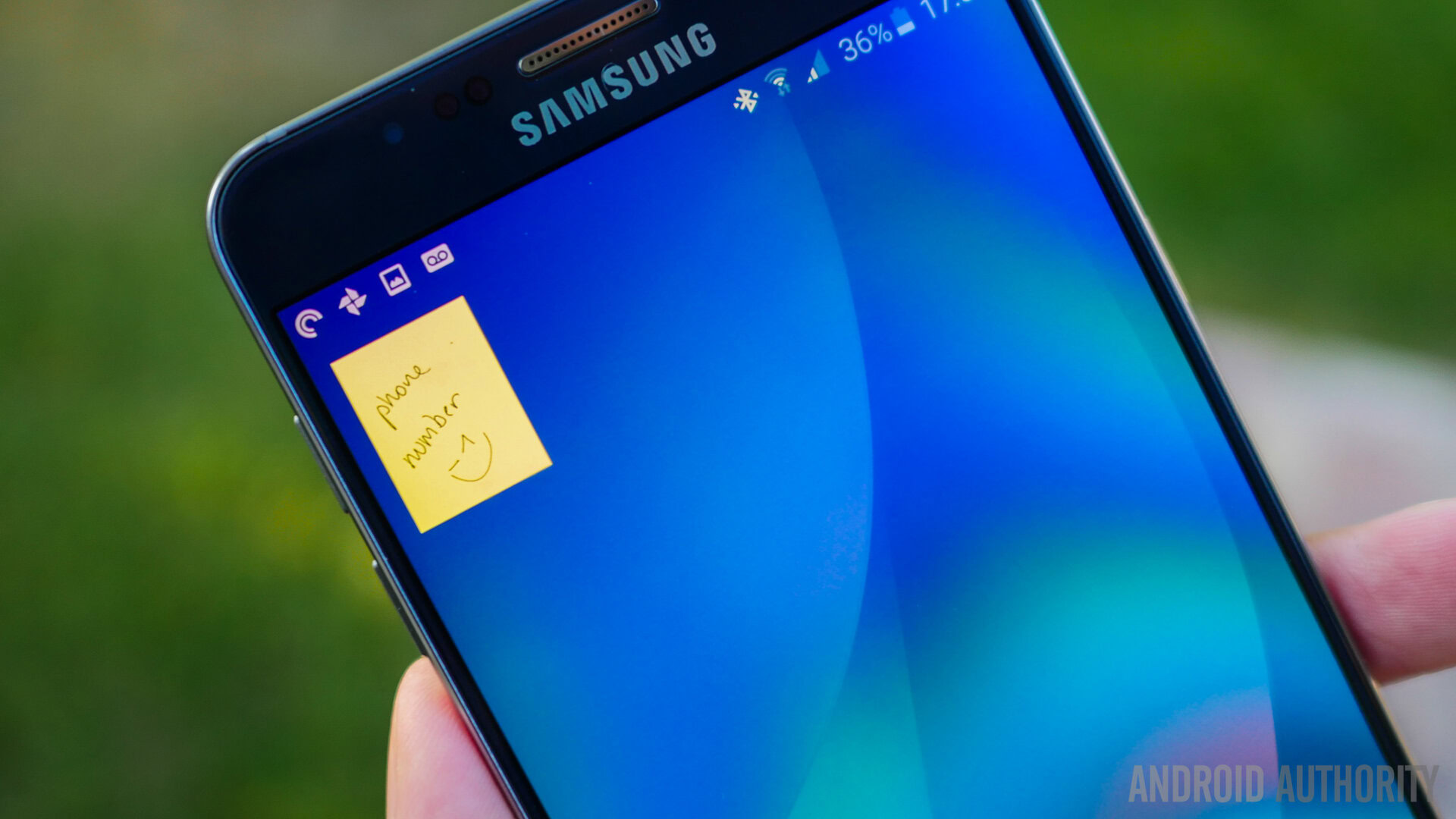
Smart Select is also as powerful as before, as any portion of the screen can be cut out and easily shared. For anyone that likes to talk in messaging apps through pictures and memes, like I do, Smart Select is pretty awesome. Finally, there is Screen Write, which takes screenshots of the current workspace for editing and sharing. Now, scrollable places like Web pages can be pieced together automatically, creating a long image or note than encompasses everything you want to save from the page.
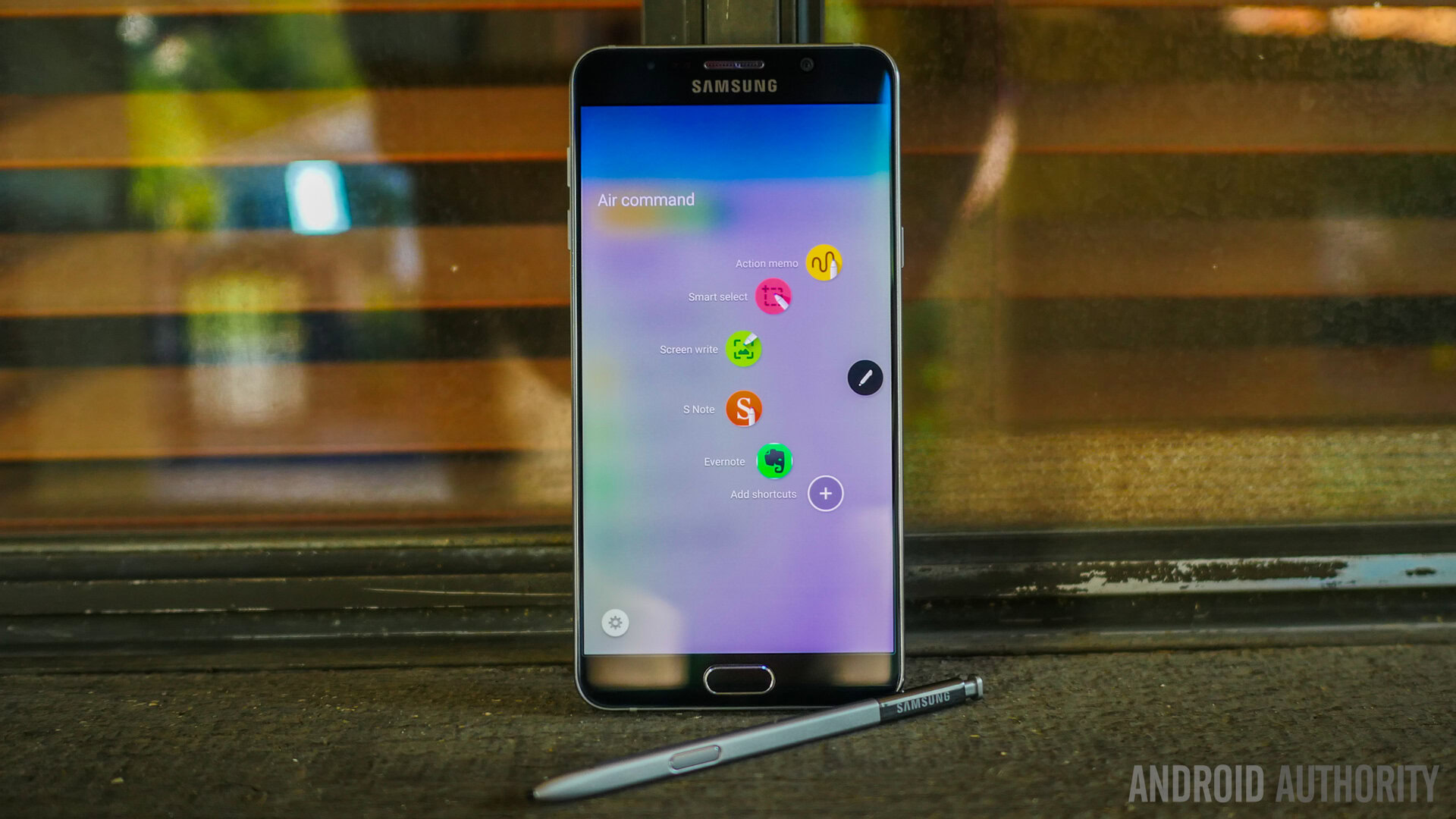
What is probably best about the S-Pen is that it actually feels a bit more essential than before, and that was achieved by not oversaturating it with buttons or tutorials, or even raw features. The list of S-Pen abilities is not as long as before, but there are solid use case scenarios for every single feature that is available. Even if you almost never use the S-Pen, it’s an addition that proves its worth every time you say “why not,” and perform your typical task with it instead.
Specifications
| Display | 5.7-inch Super AMOLED 2560 x 1440 resolution |
|---|---|
Processor | Exynos 7420 |
RAM | 4GB (LPDDR4) |
Storage | 32/64 GB |
Camera | 16 MP rear camera with OIS 5 MP front-facing camera |
Connectivity | WiFi a/b/g/n/ac Bluetooth 4.1, NFC, GPS + GLONASS |
Networks | LTE cat 6 300/50 |
Battery | 3,000 mAh Fast charging WPC and PMA-compatible wireless charging |
Software | Android 5.1 Lollipop with TouchWiz |
Dimensions | 153.2 x 76.1 x 7.6mm, 171g |
Colors | black sapphire, white pearl, gold platinum |
Gallery
Pricing and final thoughts
The Galaxy Note 5 was made available just days after its launch across all major carriers in the US, and as expected, it comes at a steep price point. In total, about $700 is what you will shell out to get Samsung’s latest addition to the Galaxy Note line, whether or not you use payment plans on AT&T, T-Mobile, or elsewhere.
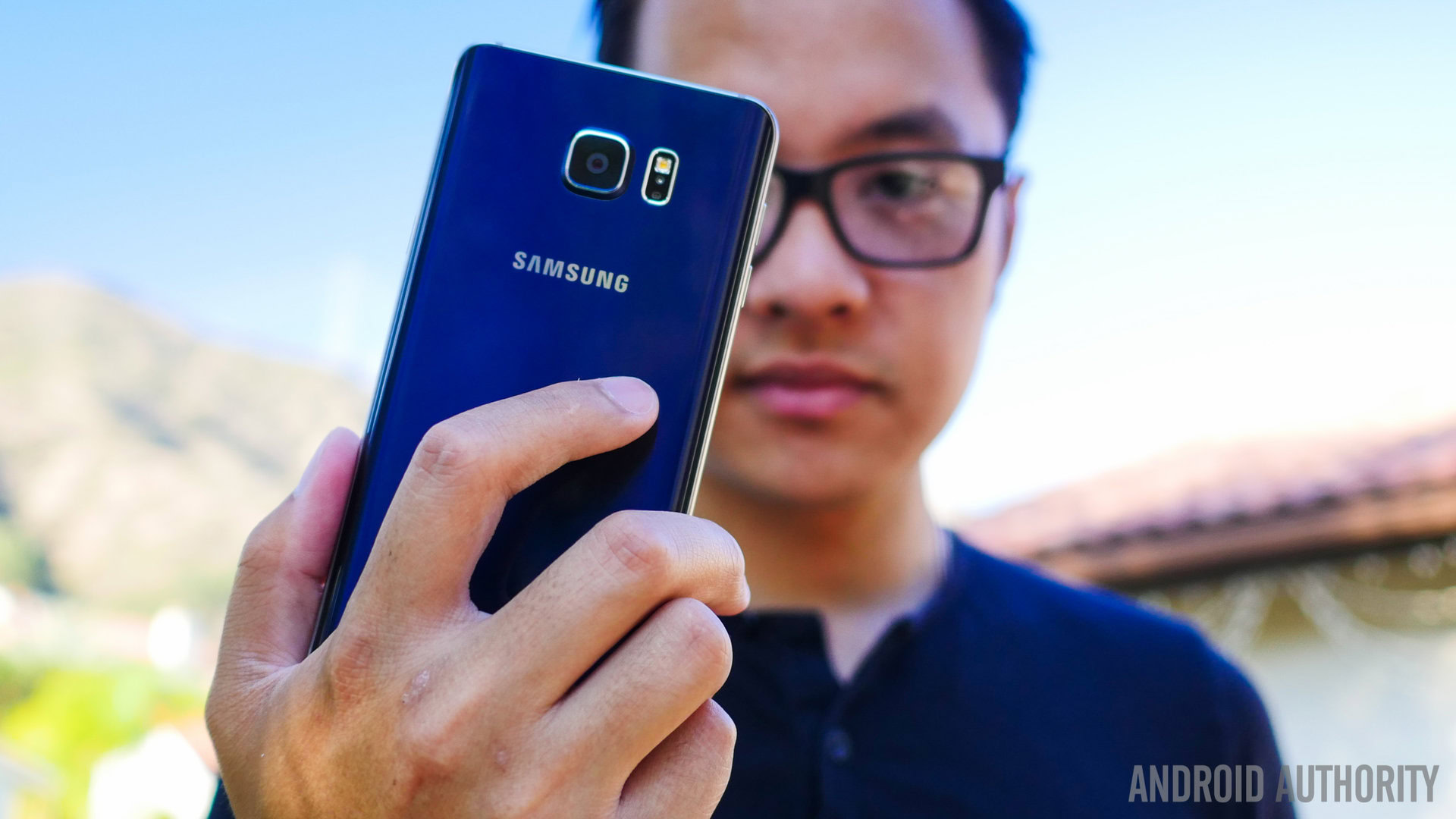

So, there you have it for this in-depth look at the Samsung Galaxy Note 5! It’s hard not to look at the Galaxy Note 5 in comparison to what Samsung has offered in the past, because of the company’s decision to take quite a departure in design and hardware choices. This phone may not feel like a power user’s device anymore, and people who feel that way are completely validated in doing so. For those who expected more, this new iteration feels too much like the Galaxy S6 in terms of what features it leaves out.
On the flip side, the Note 5 takes the best of what the Galaxy S6 offered and brings it to a bigger and better package. The stellar display is even better at 5.7-inches, the performance is super smooth and reliable for any and all usage levels, and the camera is one of the best in Android today. Expandable storage and replaceable batteries might be missed, but we were still able to enjoy the Note in spite of that. If we work with what is given, this phone still delivers. At first look, many people were not convinced that the device was worth the upgrade, but spend some time with it, and there is a good chance that you will fall in love with the Note, just like you did before.
Related:
- A history of Samsung’s Galaxy Note series
- The Galaxy Note 9 is here: Everything you need to know
- The Galaxy Note 9 proves that Samsung thinks HUAWEI’s phones are worth copying
- The Samsung Galaxy Note was announced seven years ago, it’s still the most influential Android phone
- Samsung Galaxy Note 9 vs Galaxy Note 8: Worth the upgrade?
- New Samsung teaser ad pretends the Note 7 didn’t exist